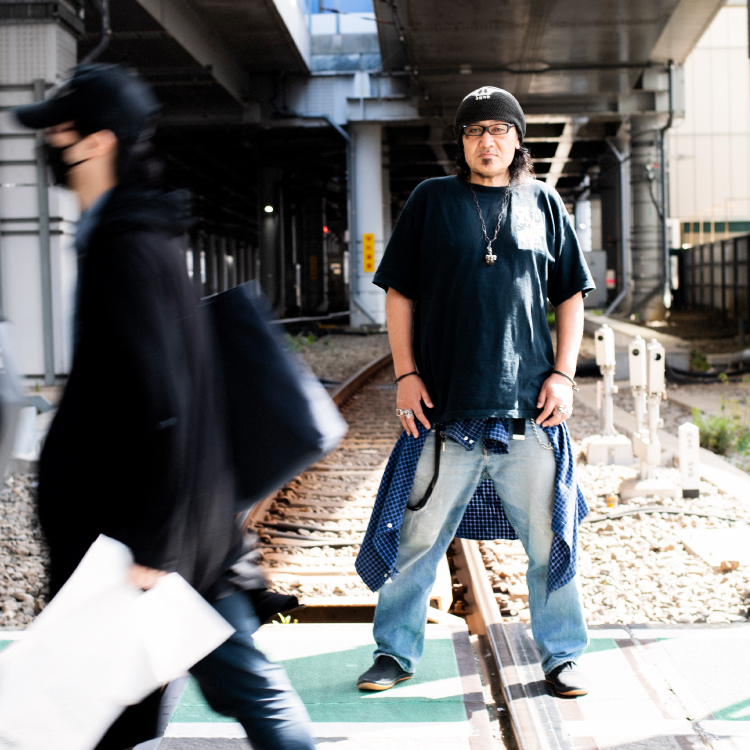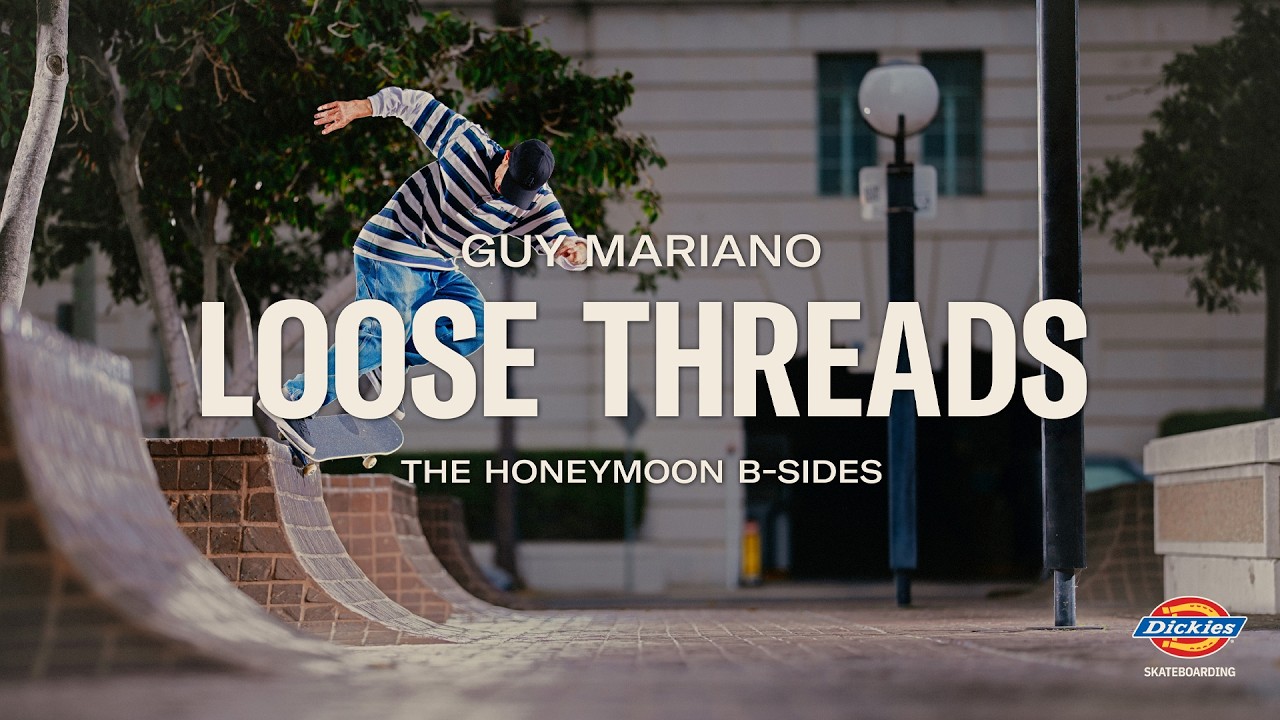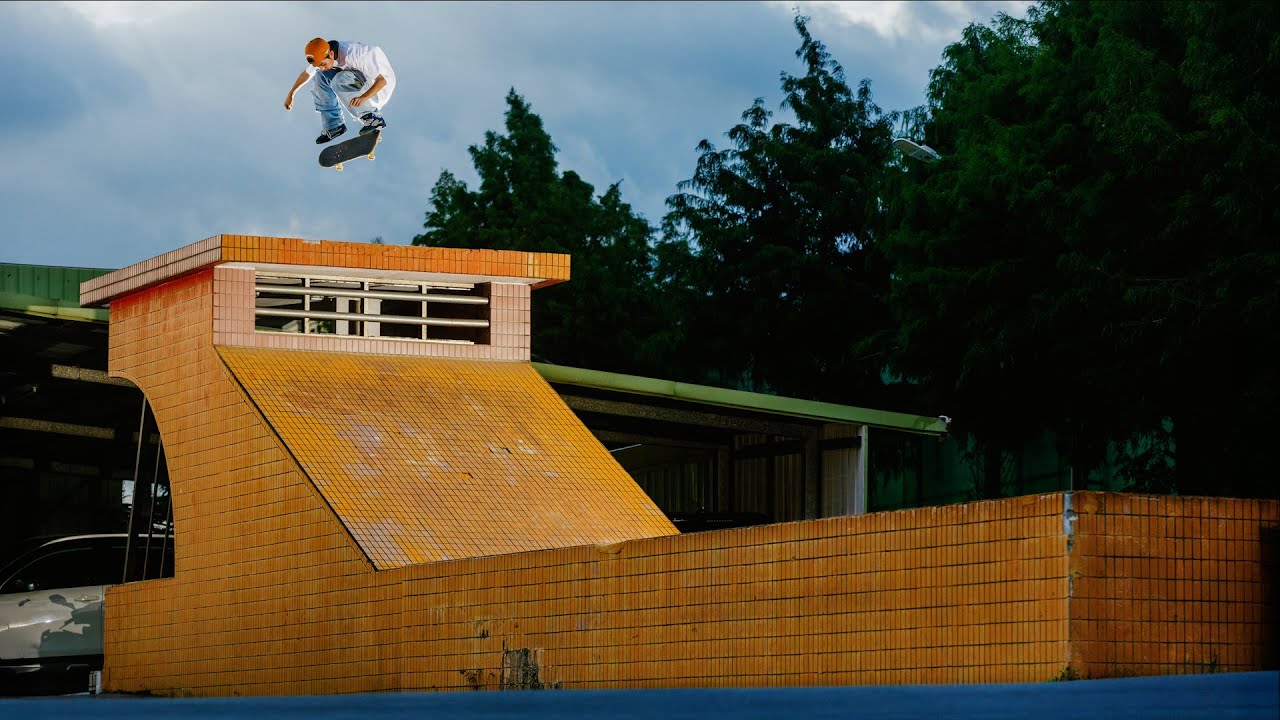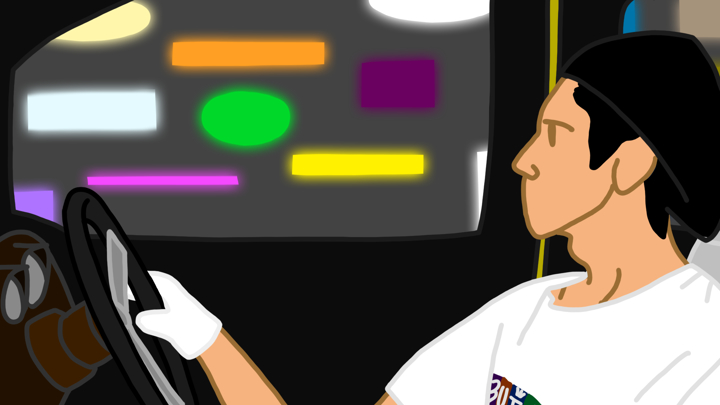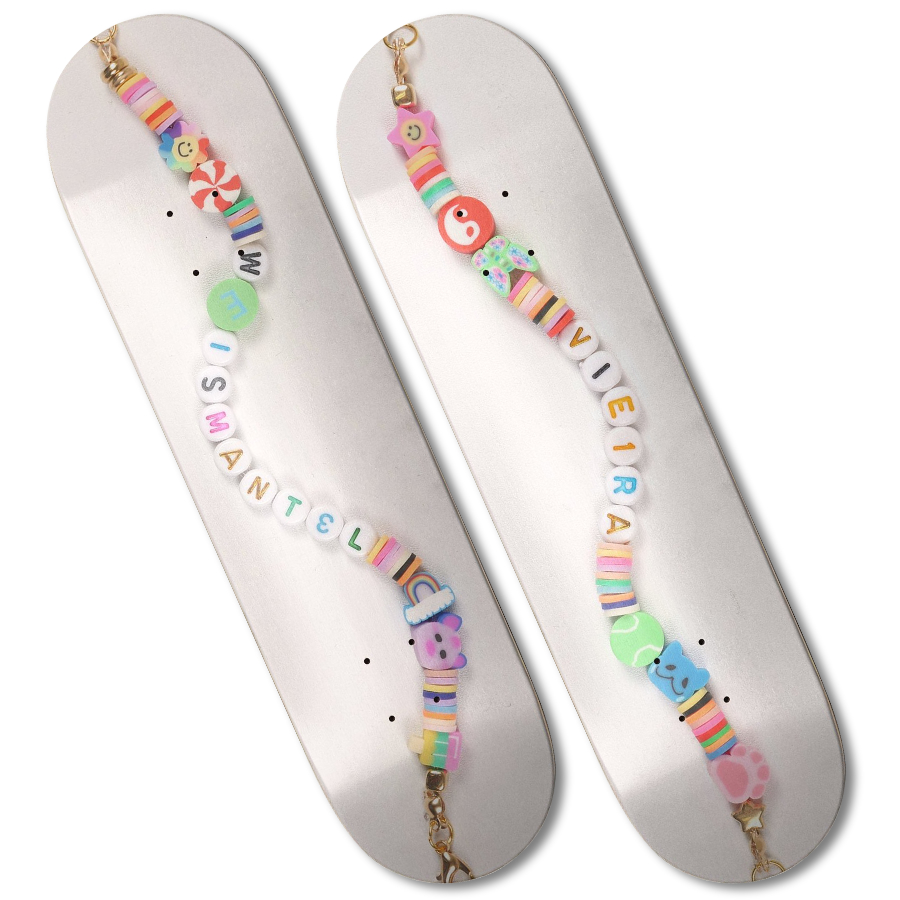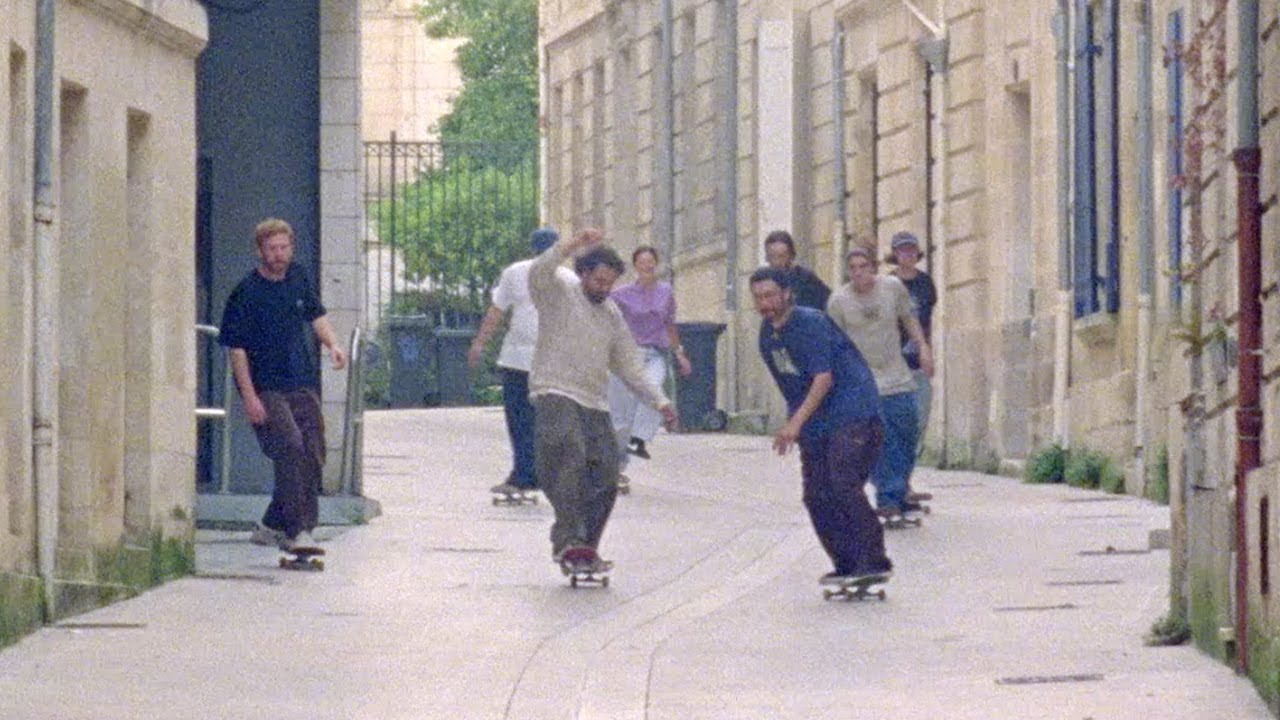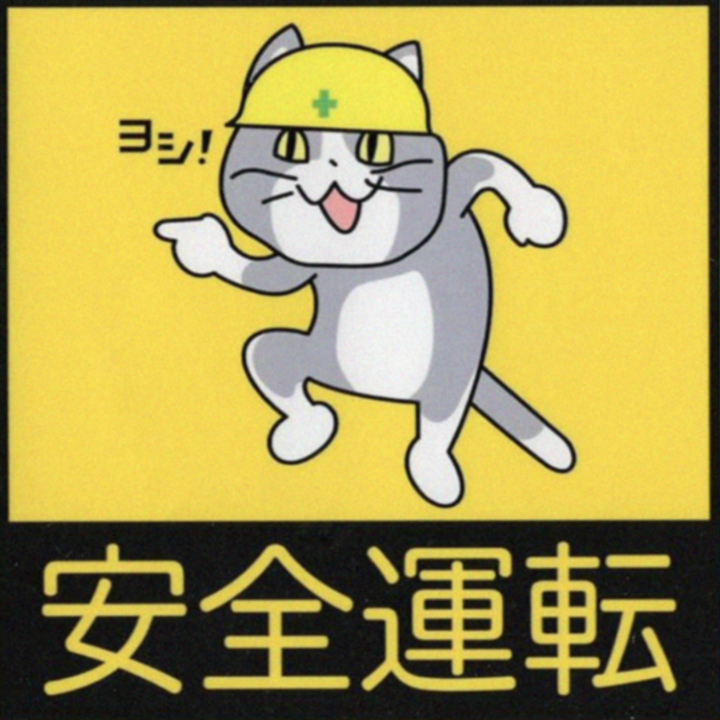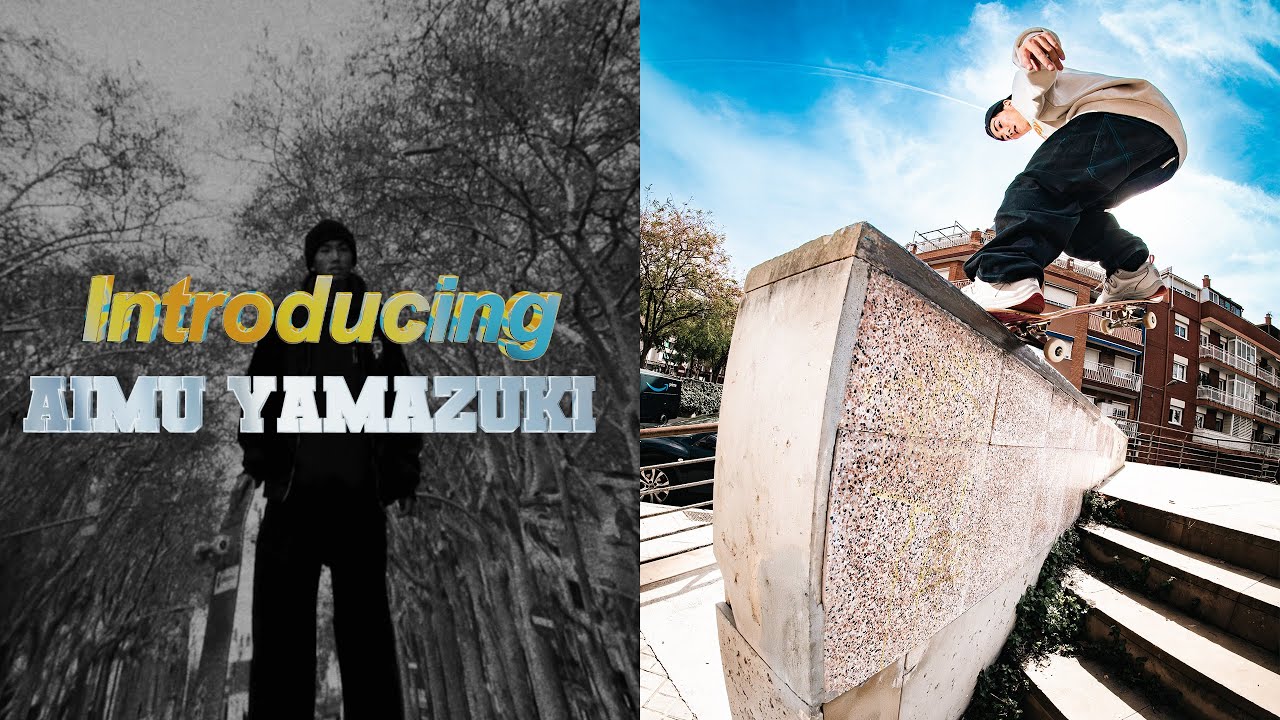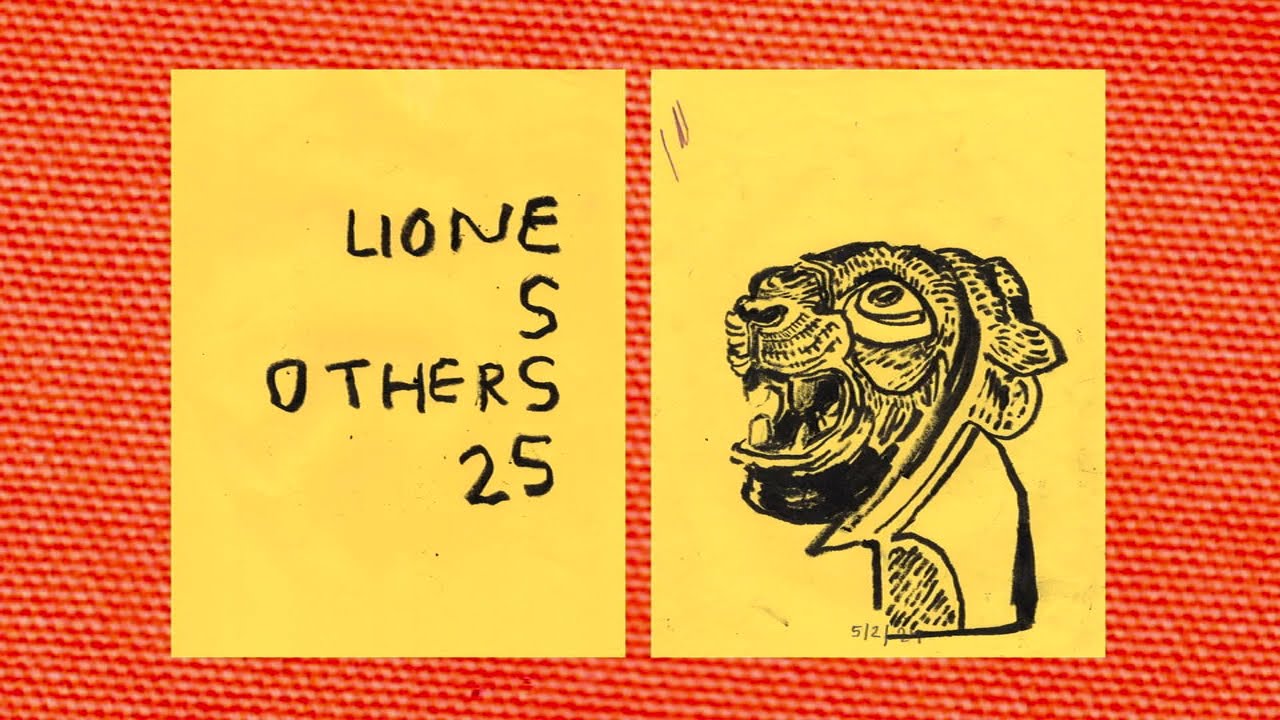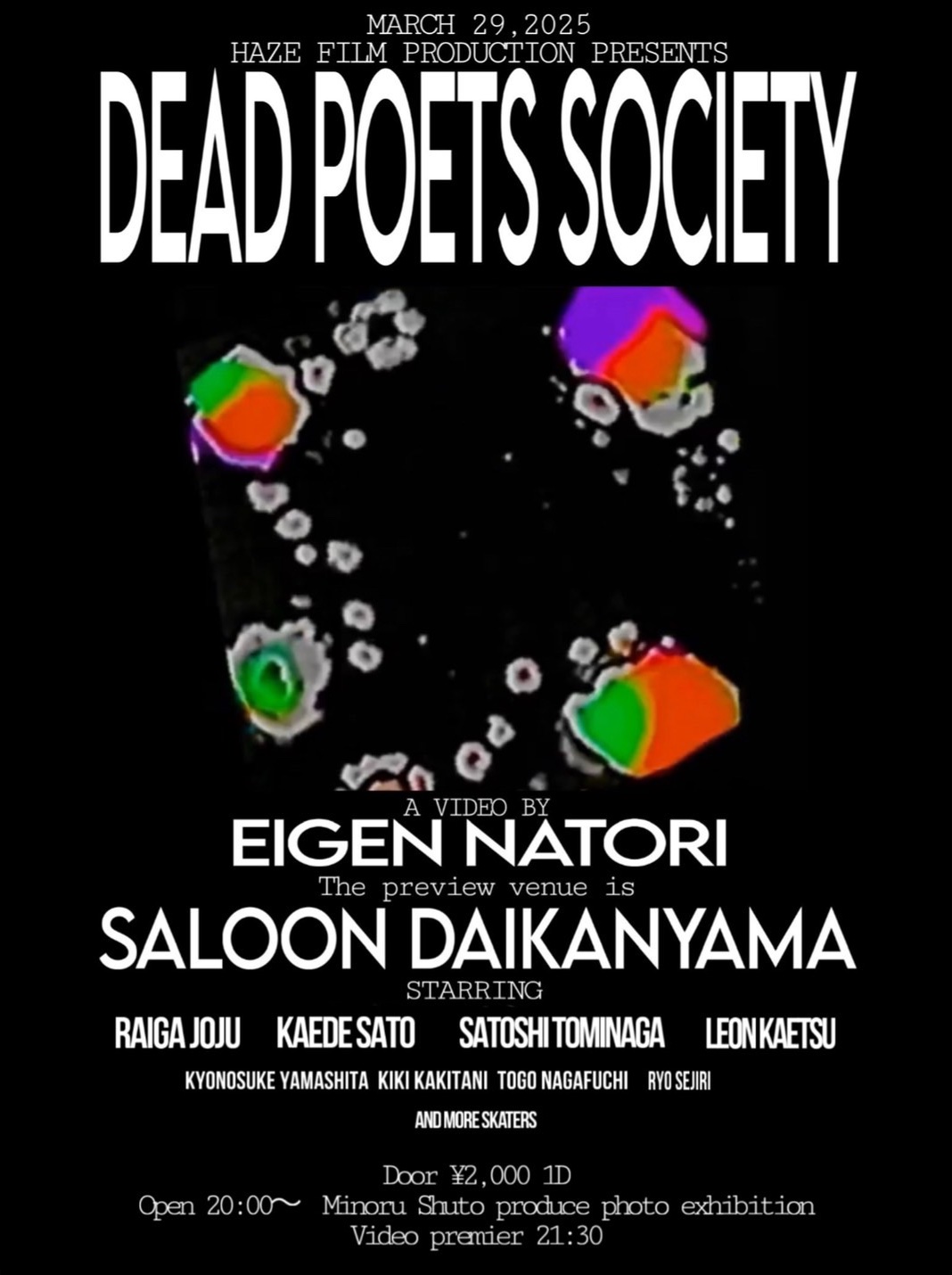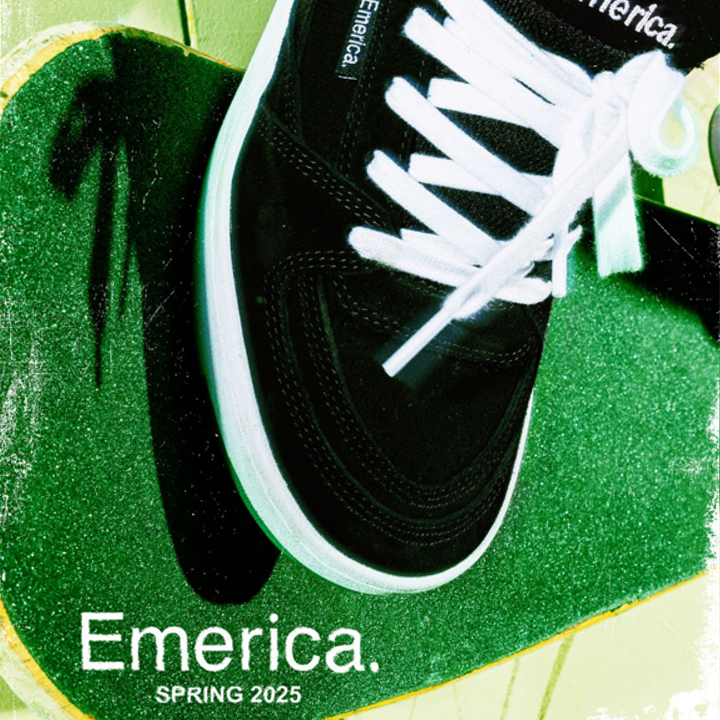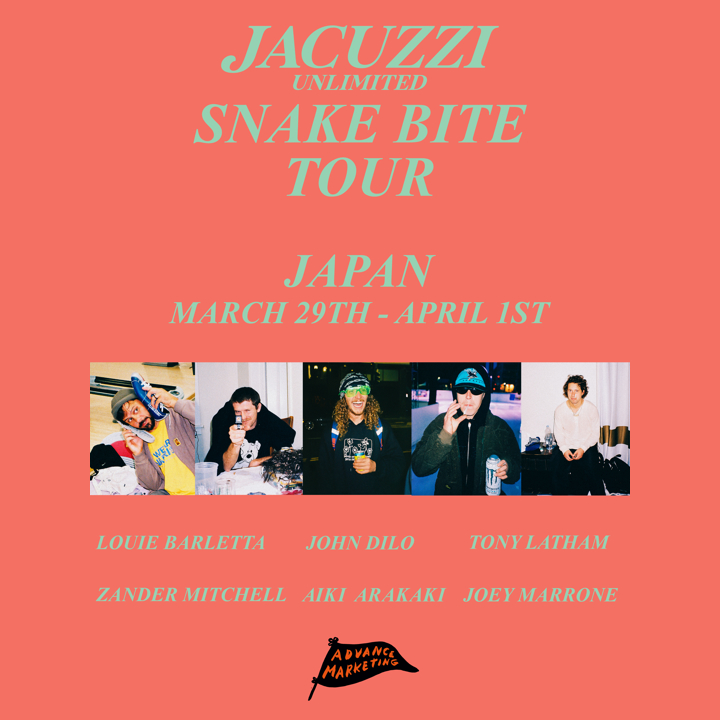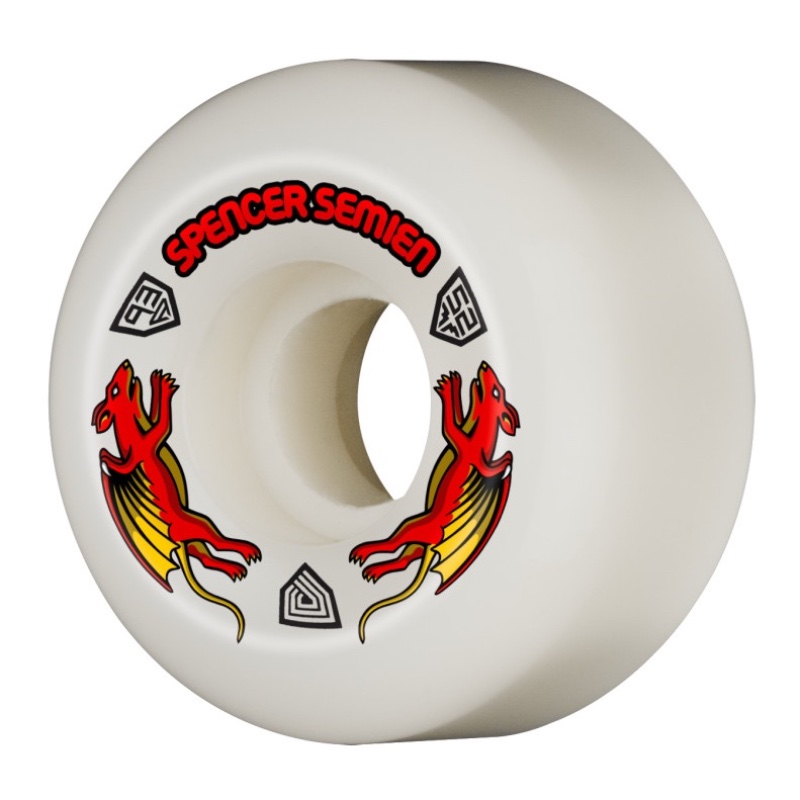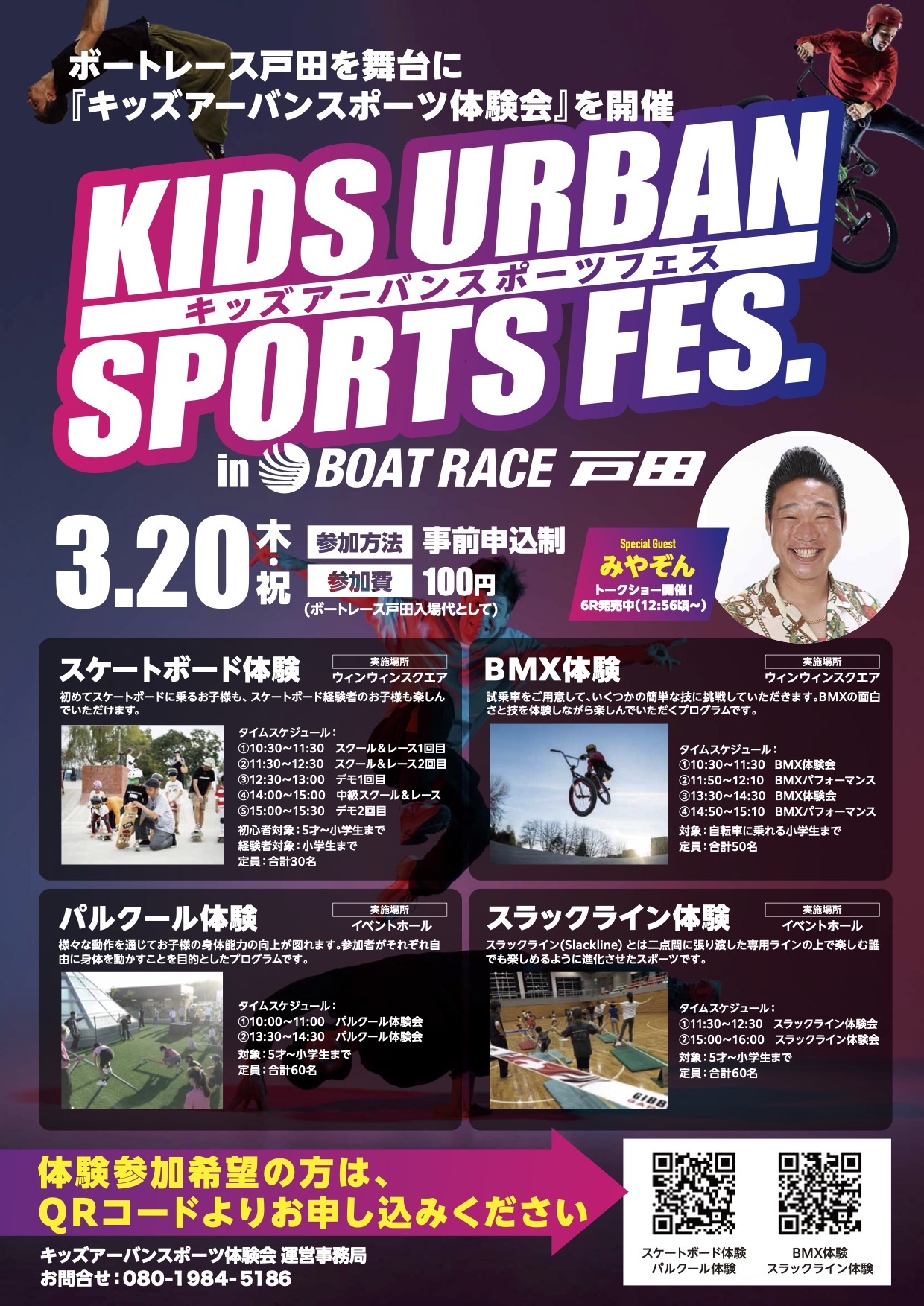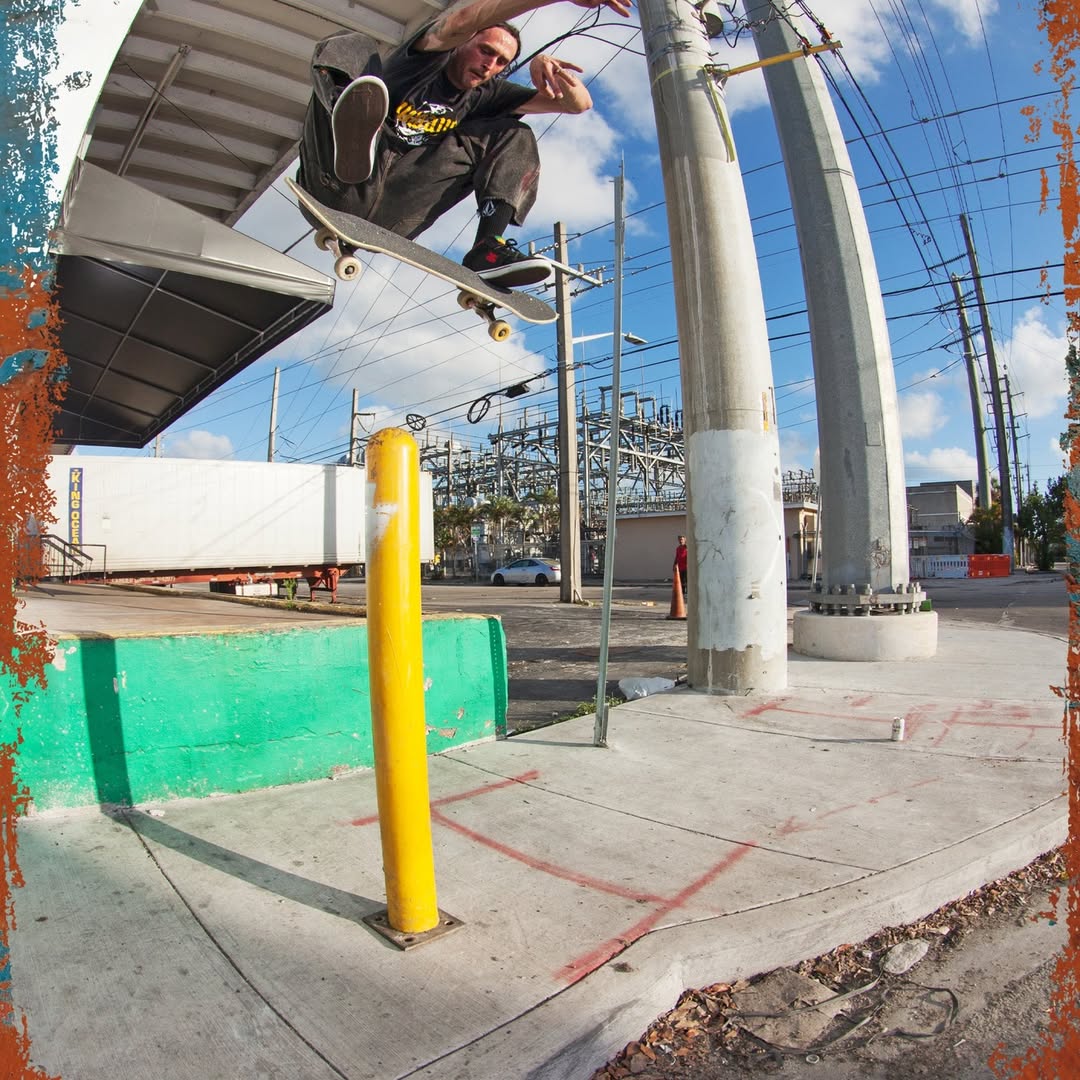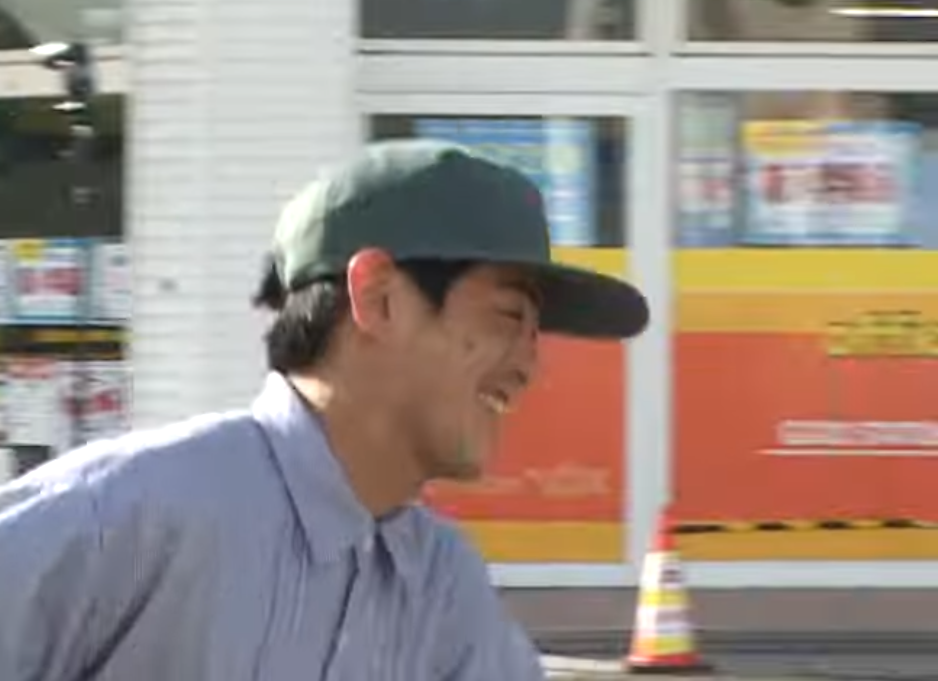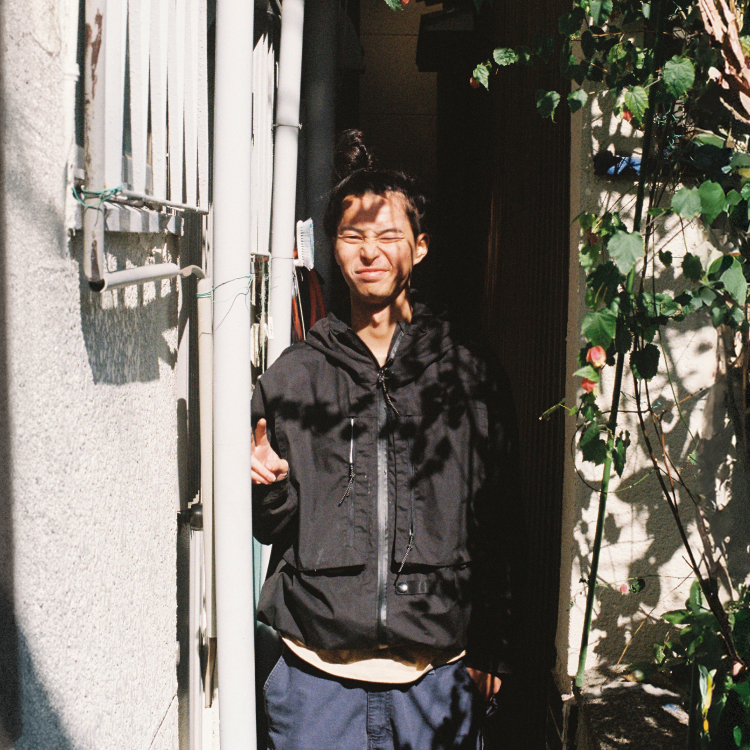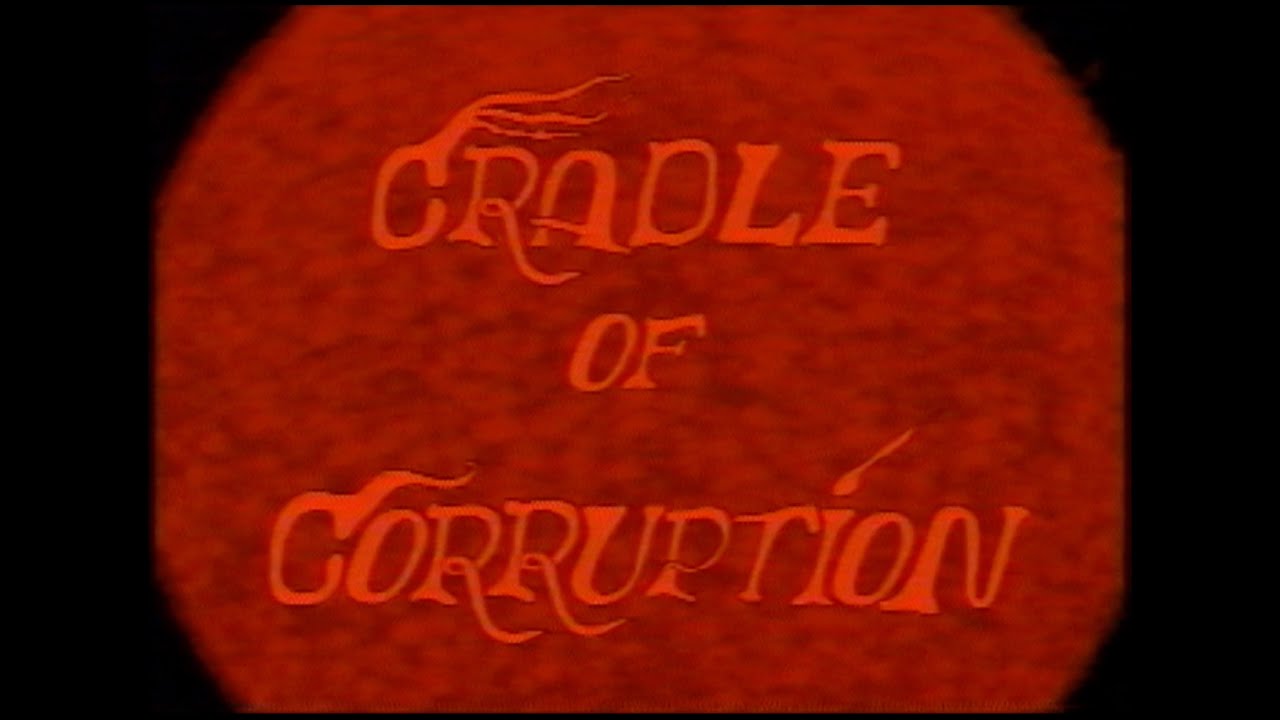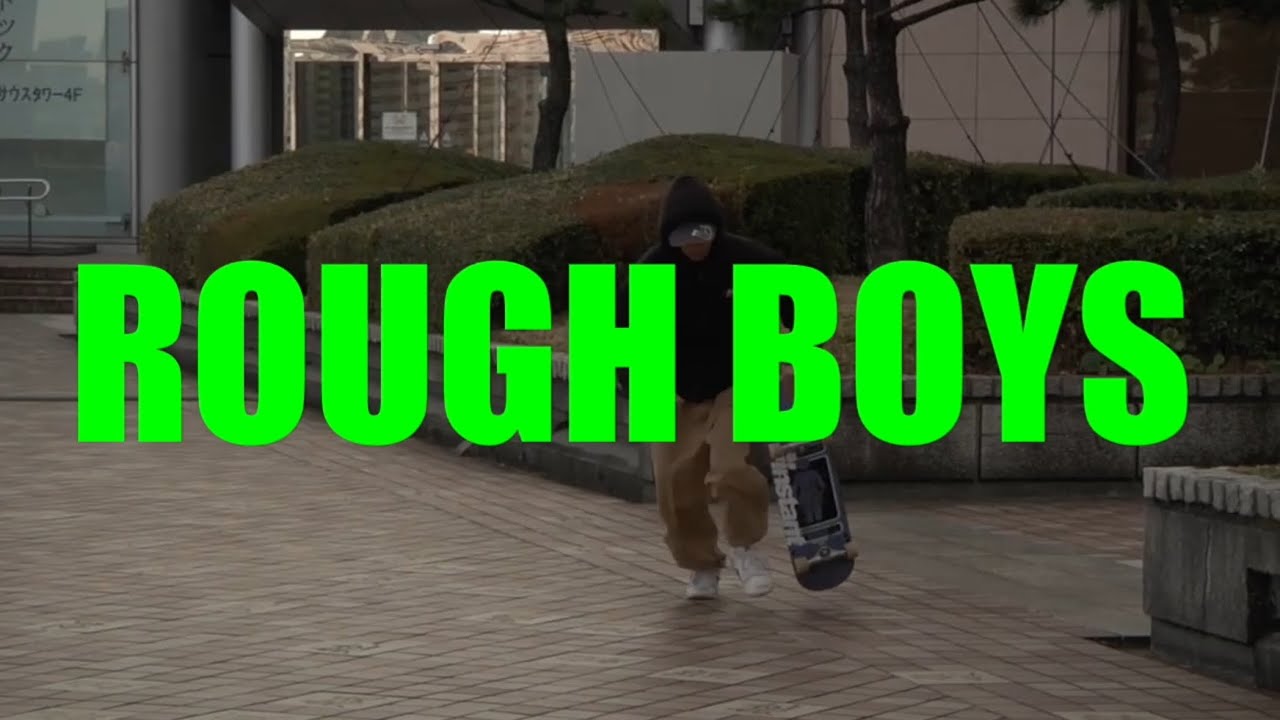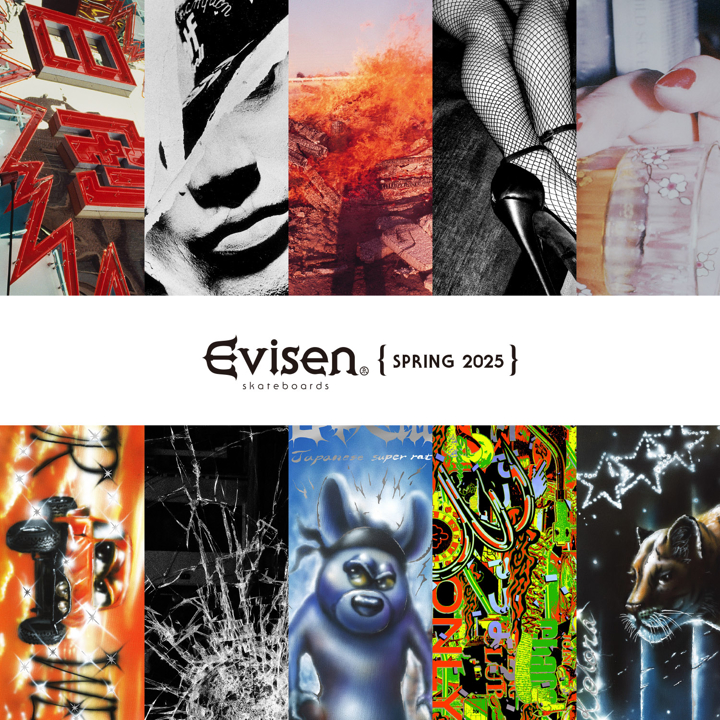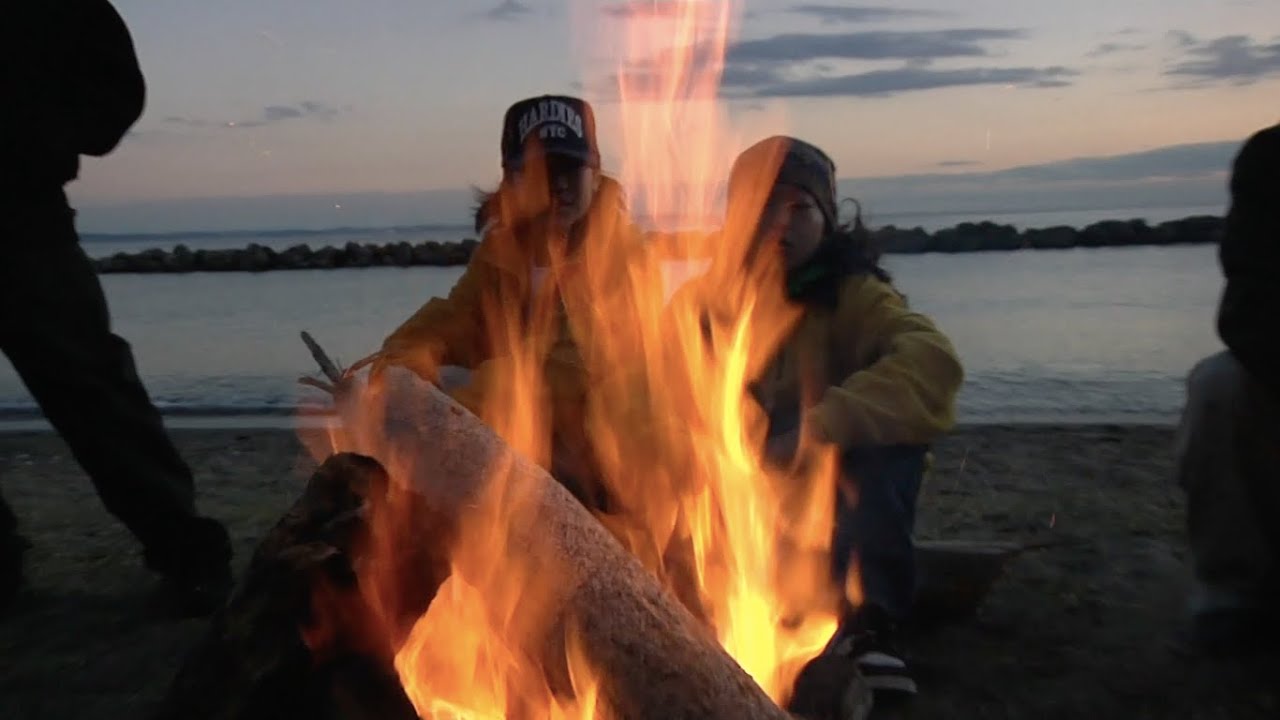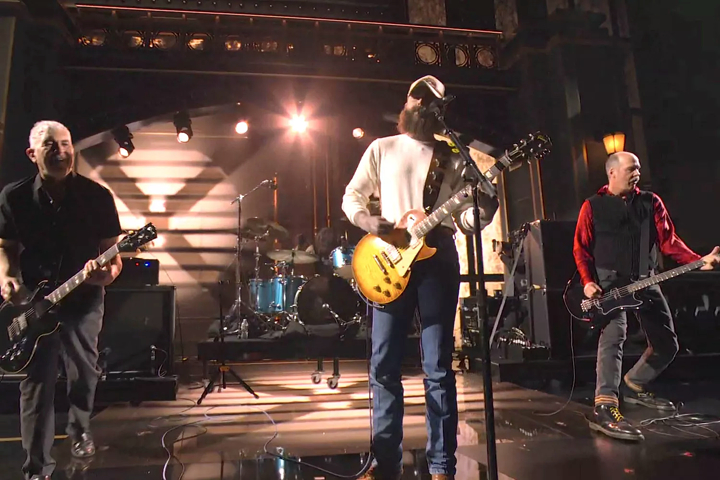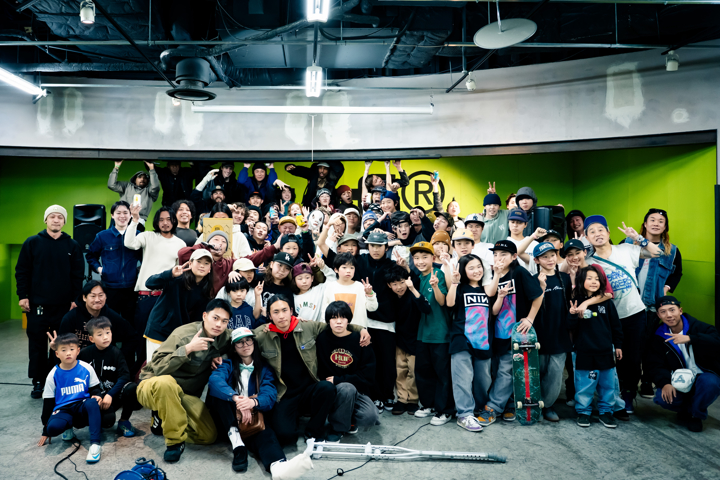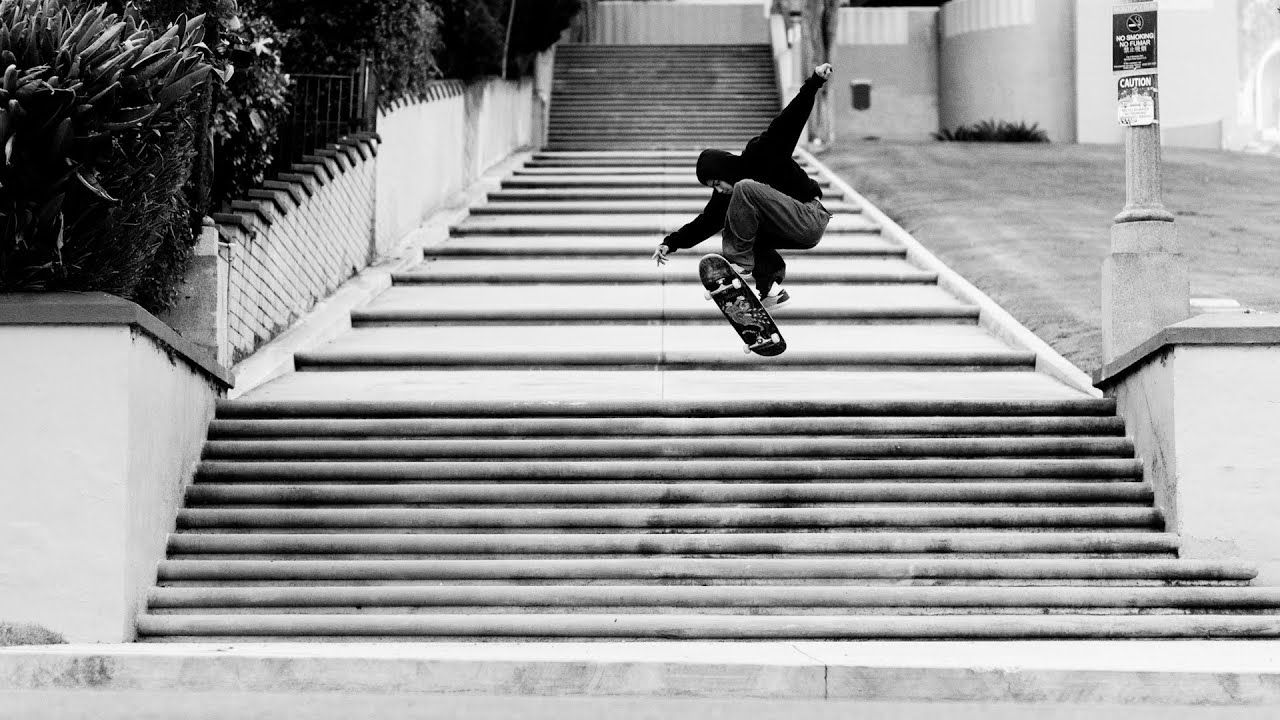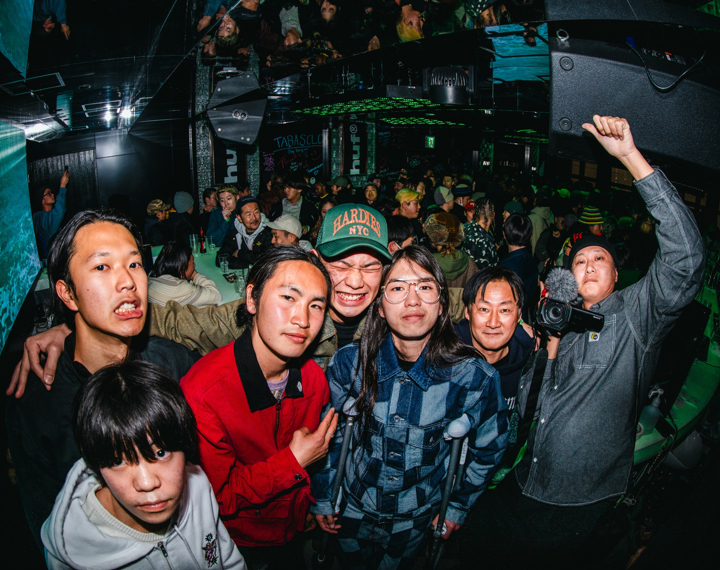The photographer Yoshimitsu Umekawa balances commercial and personal work, and is active in a wide range of fields from mainstream to street. To celebrate the release of our first artist collaboration decks, we look at the exceptional career and the art of the photographer.
──YOSHIMITSU UMEKAWA (ENGLISH)
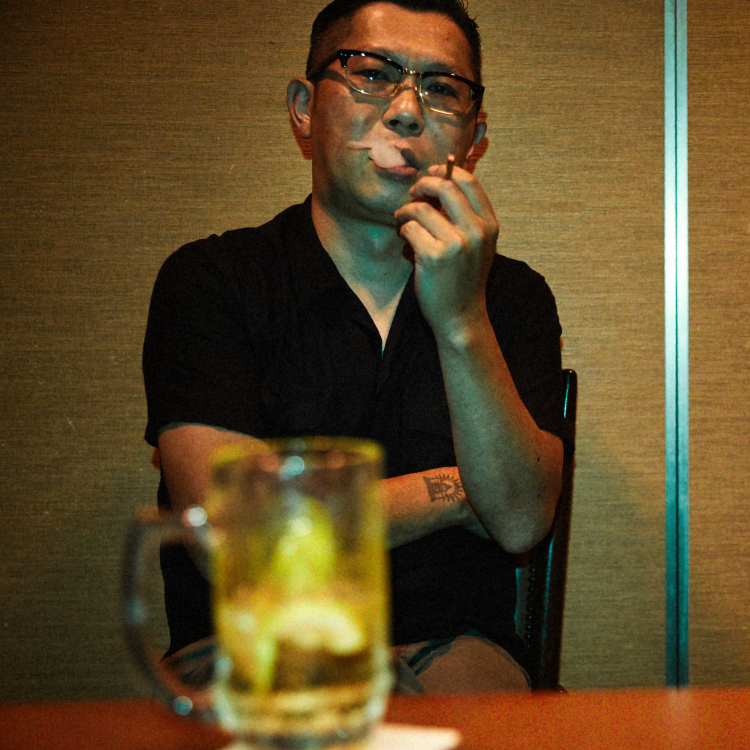
[ JAPANESE / ENGLISH ]
Photo_Junpei Ishikawa
VHSMAG (V): Let me start by asking about your childhood. What kind of environment did you grow up in?
Yoshimitsu Umekawa (U): My dad used to paint when he was young. As far as I know, he was an oil painter but didn't become a pro. He won the Prime Minister's Award when he was in junior high school, and he started to pursue the path of a promising artist (laughs). But it was after the war, and his parents told him that he couldn't make a living off painting, so he decided to pursue a career in medicine. By the way, my uncle was an editor and my grandfather was a photographer.
V: So your dad and relatives were into art. Was there anyone who had an influence on you growing up?
U: When I was in elementary school, I had a best friend who was a snob, and he was quite funny. We used to play with a toy gun and his father was a master of Goju-ryu, which is like killer style karate before it became Kyokushin Karate. He was the kind of guy who would send me New Year's postcards with a drawing of a rising sun and a national anthem written on them when we were in fourth grade. And he criticized me for being a "Westernized" person (laughs). Also his father was the president of a big production company in the TV industry. He lived in a big mansion and had two Dalmatians. It was the kind of house where you'd get calls from Joji Abe and Kazuko Komori. I was in elementary school, but I thought, "This guy is really weird" (laughs). When we were in high school, he appeared as a magician in a famous TV program called Waratte Iitomo... He was handsome so people liked him and he even published a book and had a comment from Tamori. In the end, he was the son of a major figure in the TV industry, so Tamori had to pay respect. Recently, we ran into each other again. He was the first weird guy I ever met in my life (laughs).
V: I heard that you were born and raised in Kichijoji and had many connections with musicians and artists. You're also very close with Shohei Otomo.
U: I started going to clubs when I was about 16 and I just started hanging out with them. I first met Shohei when I was about 30, when I was working with a former CLUBKING member. He was still in college. We met again seven or eight years ago through imaone, a graffiti artist from Kichijoji and a childhood friend of Shohei's. We became friends from there.
V: You had just mentioned but you were working at CLUBKING before you started photography?
U: When I was 16, the free newspaper of CLUBKING called dictionary was looking for volunteers, and my friend was doing it. I also started helping out with events and stuff. Five years later, I became a freelance photographer and CLUBKING's Masahiro Hattori helped me out a lot. I met a lot of people at that time and my world suddenly expanded. Moichi Kuwabara, Keita Ishiguro, Toshimitsu Ono of Spectator, Naohiro Ukawa, Tomohiko Gokita, NIPPS... I learned a lot from them, and before I knew it, I lost my mind and went crazy (laughs).
V: How did you get started in photography in the first place?
U: I actually wanted to become a graphic designer when I was in high school, and at the end of my teens I had a part-time job at a bar called Red Shoes in Nishi-Azabu. But when the bar closed, I needed to get a real job. I thought about going back to design school at night, but the school didn't have a design course. The closest thing I could find was a photography course. That's how it started (laughs).
V: So as a result you made the right decision.
U: I did my best, though, because I knew there was no turning back. So when I was in college, I started helping out at a surrealist gallery, and that's when I met the photographer Irina Ionesco. I went to France and helped her work, and she was a very unique person. She's like the master of the photography world, so she had a great influence on me. I was also introduced to Jeanloup Sieff in France, but they didn't seem to get along with Irina each other. I couldn't tell Irina that I went to see him (laughs). Irina Ionesco is the type who shoots with her right brain, and Jeanloup Sieff is super technical. Sieff is the master of documentary and fashion, and Irina is the master of art photography and I still admire them both, even though they are of different types.
V: So in retrospect, you were influenced by the both worlds.
U: Basically, I'm the type of person who can enjoy everything. I'm all over the place (laughs).
V: You graduated from college after coming back from France and got a job once, right?
U: I was in the photography department at Toppan Printing. The size of the studio was huge. At that time, there were more than 50 photographers alone, and more than 200 if you include the assistants. The work was boring and it was 20 years ago, so it was unnecessarily demanding. I just couldn't stand working with those assholes, so I quit after about three or four months (laughs).
V: Then you pitched your work to CLUBKING.
U: It was hard but I managed to make a portfolio to show them. I hired models from agencies and took photos. It was hard to make a living at first.
V: What was your first work as a photographer?
U: I wasn't a professional at the time, but the first time I had my photo credited was for the Kinema Junpo. I was shooting people like Hiroshi Aramata. After that, I started working more for culture magazines and then for music. I was always interested in club music, and I knew a lot of Hip-Hop artists, but I was thinking of doing mainstream work as well. I didn't want to be called a "subculture" photographer because those types of people don't get taken seriously. I think "subculture" is a derogatory term. I don't call it "subculture," I call it the "coolest thing." We should call it "cutting edge."
V: Was there a turning point when you were convinced that you could make a living from photography?
U: A turning point? I don't know... I can only wonder why I turned down certain offers (laughs). Well, I guess every moment is a turning point.
V: So you started with commercial work and then moved on to culture magazines and music.
U: Before that, I used to shoot choreographers. I shot a lot of black and white when I was younger, in my early 20s. After I started working, I started doing a lot of color.
V: What are the culture magazines you were working on often at the time?
U: EYESCREAM, SWITCH, Spectator, TOKION, relax.... You can see some of my commercial work at @umekawa_yoshimitsu. Also, I did a lot with Eiga Hiho.
V: You've photographed both "cutting edge" people and mainstream celebrities. How did you expand your work?
U: I've never really sold myself except for when I was starting out, so I guess it's just a connection I made. As I worked one by one, I kept getting offers. It's strange but that's how it went for me.
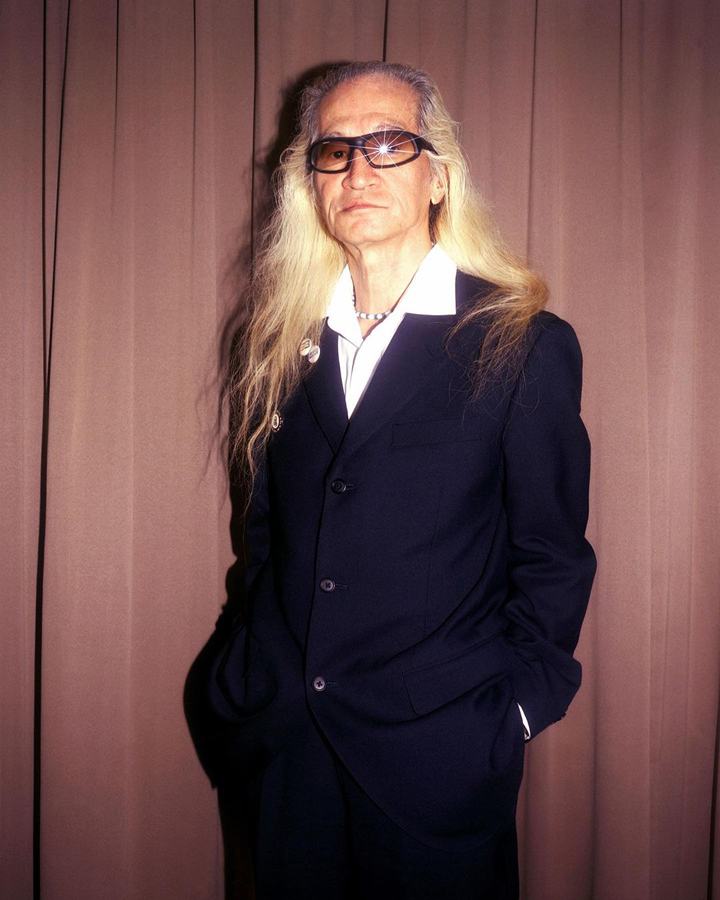
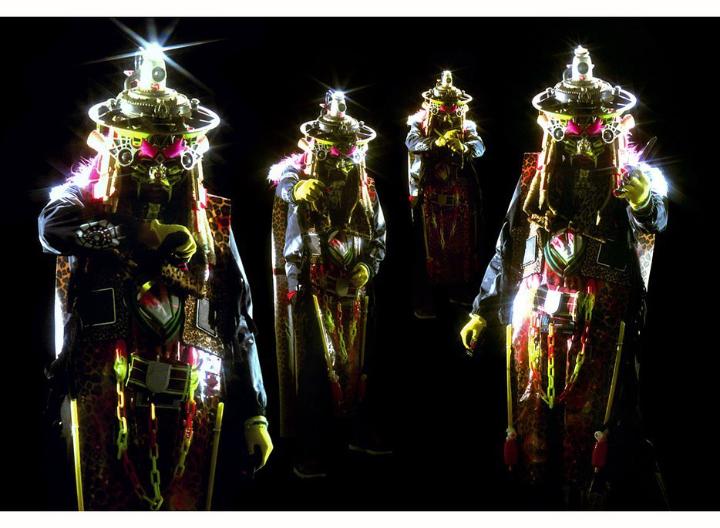
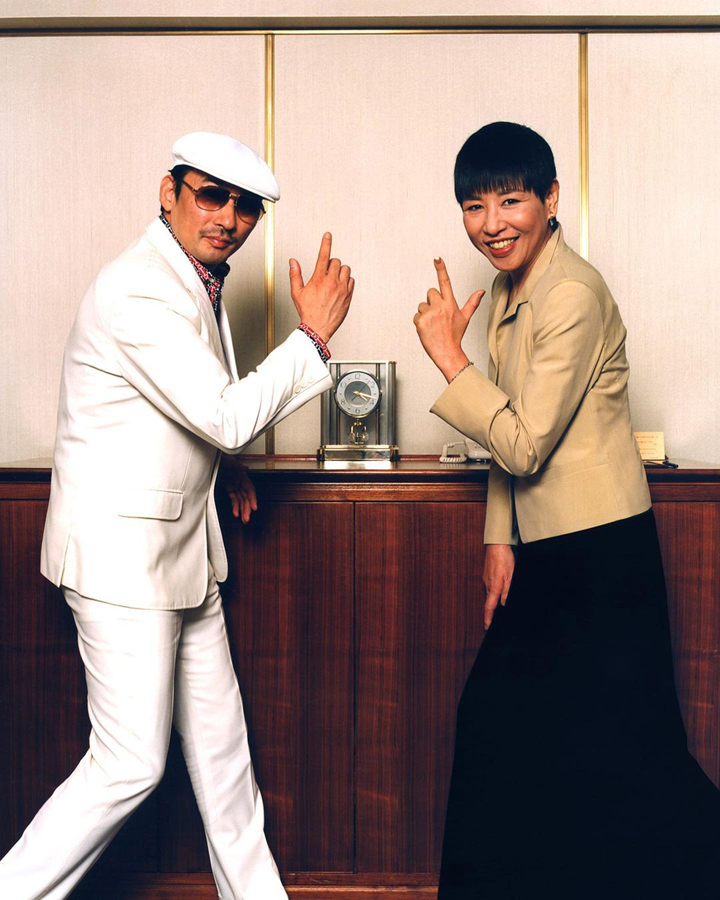
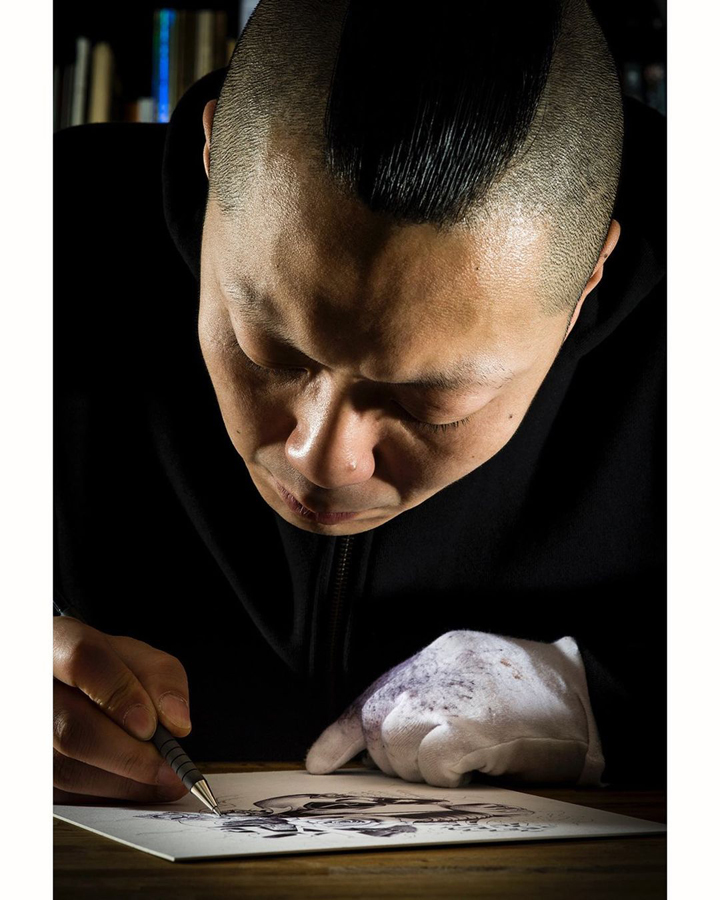
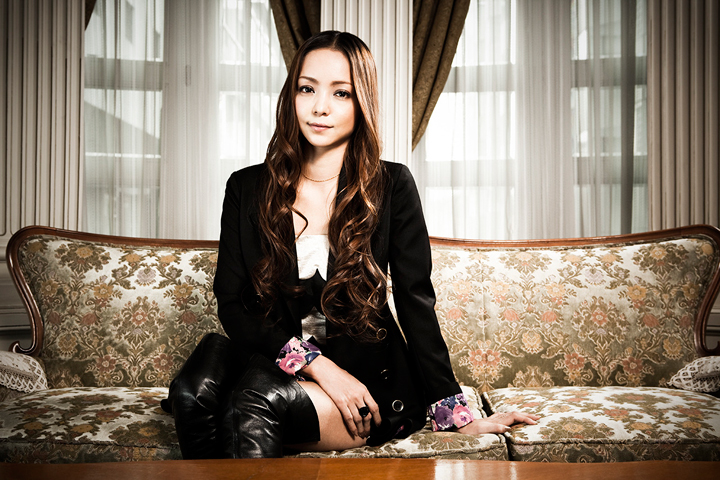
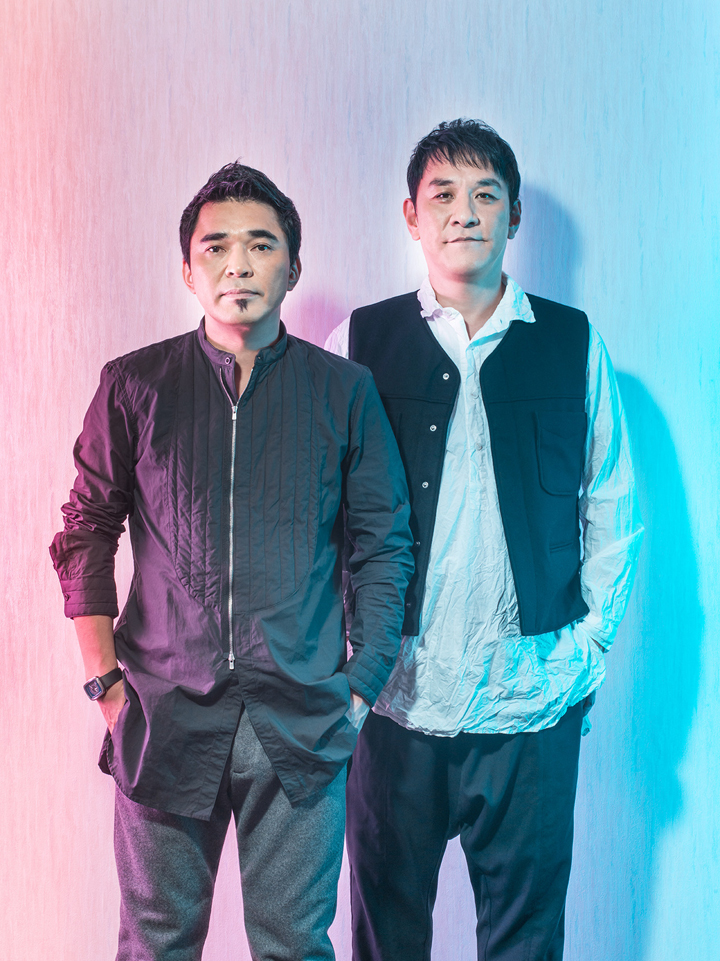
V: While continuing your commercial work, you released two photo books, LEAVE ME ALONE and Drip Bomb, in 2012.
U: Yes, I started working on my personal stuff around 2012. I was going to publish another book, but I didn't have anyone who was interested and would pay for it (laughs). The hurdle was incredibly high.
V: Your first book was LEAVE ME ALONE.
U: It's a 9-poster photo book, and I made it with euphoric images. Well actually, it's rather a series of drugs (laughs).
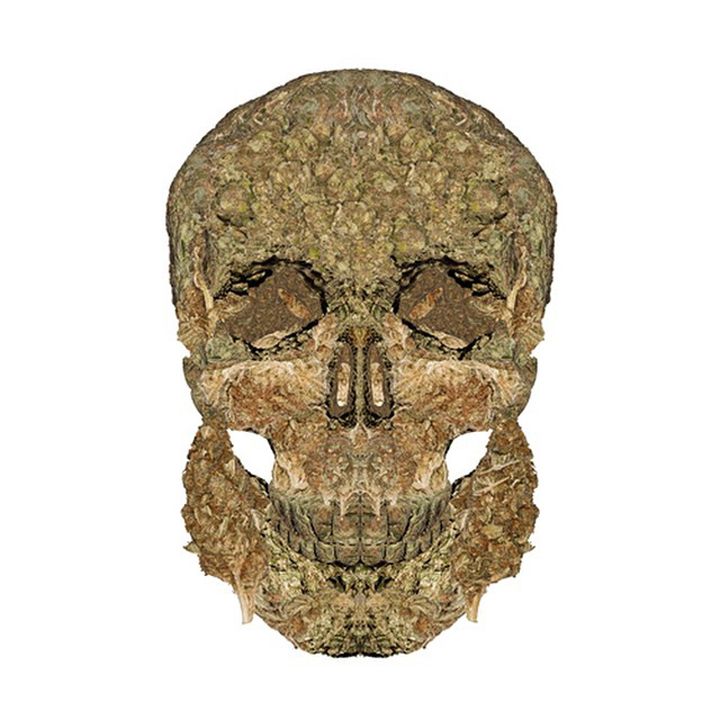
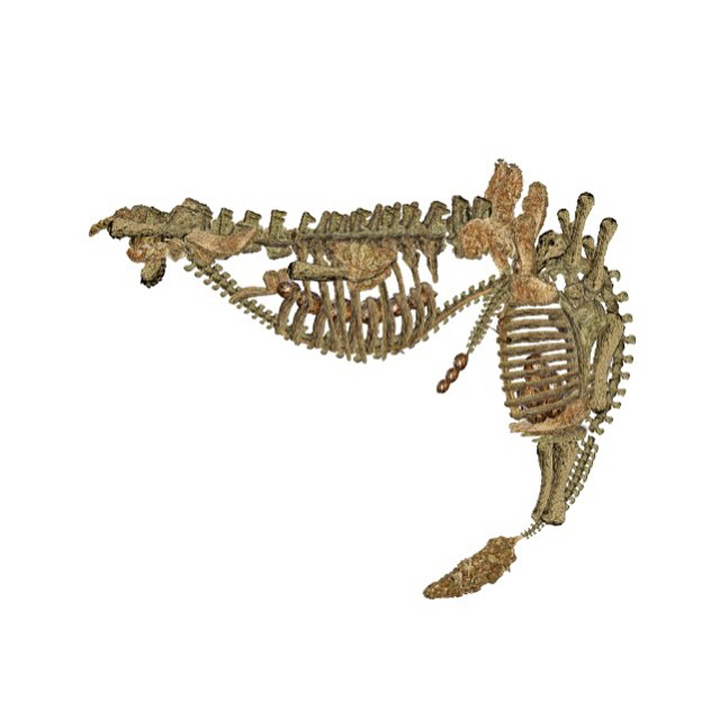
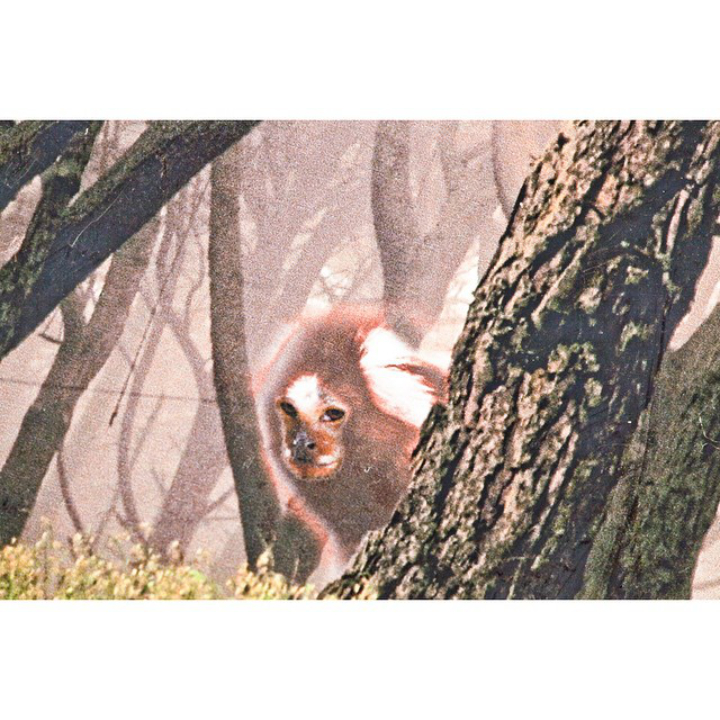
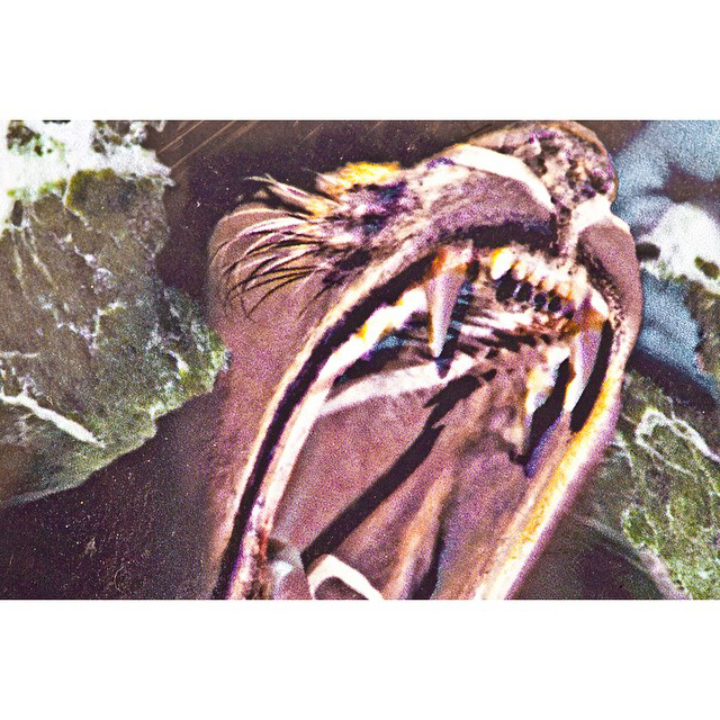
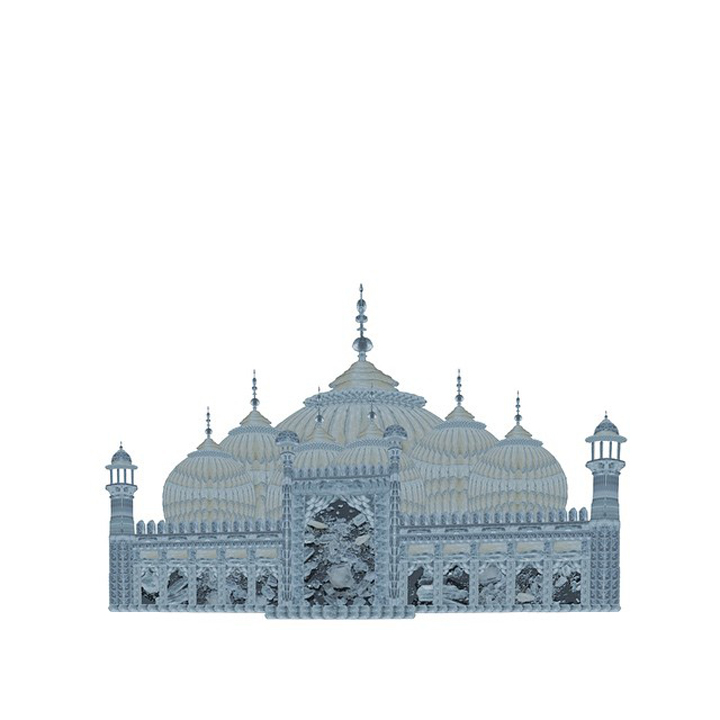
V: And then "Drip Bomb." It's a very unique and powerful book about vomit... What made you decide to make this book?
U: Maybe I was just... I guess I just made the wrong decision (laughs). When I think about it now, I think it was a reaction to the stress of working in the mainstream world. You know, like "You guys are annoying!" I think things were bottling up inside. Well, I'm just joking. It was just that a publisher I knew was interested. If it hadn't been for that timing, I probably wouldn't have published it. Because I was like, "Really? You really want to put this out?" I definitely turned against the high fashion world (laughs). But people on the cutting edge like Ken Kagami bought it. Also, when I shot Johnny Knoxville from the Jackass for Eiga Hiho, I gave him the book. He seemed to like it. He told me, "We could make this in a day," though (laughs).
V: It's obviously very unique (laughs). By the way, you shot a lot of NIPPS.
U: NIPPS was originally introduced to me by an acquaintance at CLUBKING, and one day I was taken to New York. That's when I took the cover photo for his first album. When I asked later why I was offered to come to New York, I was told, "You didn't seem to be afraid of anything." Maybe they didn't hire me because my photos were good (laughs). That was before 9/11 in 2001.
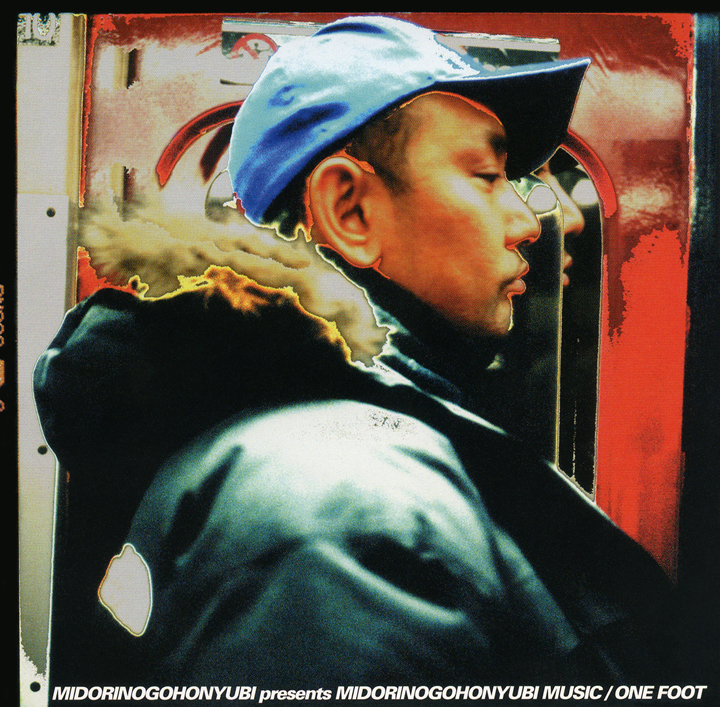
V: So you've known NIPPS since then?
U: Yes, I thought he was very slow when I met him in Tokyo, but the moment we arrived in New York, he called this dealer guy right away from the airport. He was moving so fast (laughs). We went to Queens to shoot, and also to an oyster restaurant in Grand Central Station, and we were told to take our hats off at the restaurant and no one would take it off. Then I remember the bill was so high that NIPPS made me pay for his meal (laughs). The five of us went to New York together, but all but two of us including myself, went to jail or a mental hospital after we returned home. It was super crazy.
V: How big an impact have you had from NIPPS?
U: What's amazing about NIPPS is that whenever you meet him, something miraculous happens. He's the miracle man. Strange things always happen (laughs). I've met a lot of people, but interesting people make interesting things happen on the spot.
V: You were also making some pretty ill videos back then (laughs).
U: I hardly do it now, though. I can't do it alone so I don't really want to do it anymore.
V: The NIPPS-themed "Demisan" was crazy.
U: That's a work of art. It's a legit documentary. It was shot in the ghetto area of Sanya. I don't remember how it came to be like that... Maybe I was borrowing a video camera for a different job, and we decided to film or something.
V: Changing the subject, you've also shot Antonio Inoki.
U: To tell you the truth, I was mistaken for a North Korean hitman by Inoki. At that time, I had just been divorced and I had cracked my left shoulder, so I was covering my hand. I was wearing a jersey and had a two by four for the shoot. It was for a photo shoot for a magazine called KAMINOGE, and the editor-in-chief told me, "Inoki was scared of you." So I actually scared Antonio Inoki (laughs).
V: That's funny (laughs). The color scheme was based on green, not red, which Antonio Inoki is known for.
U: That's right. Since he was wearing green, I thought I'd take a photo of him that no one had ever seen before. I'd just gotten divorced, so I was super concentrated on work (laughs).
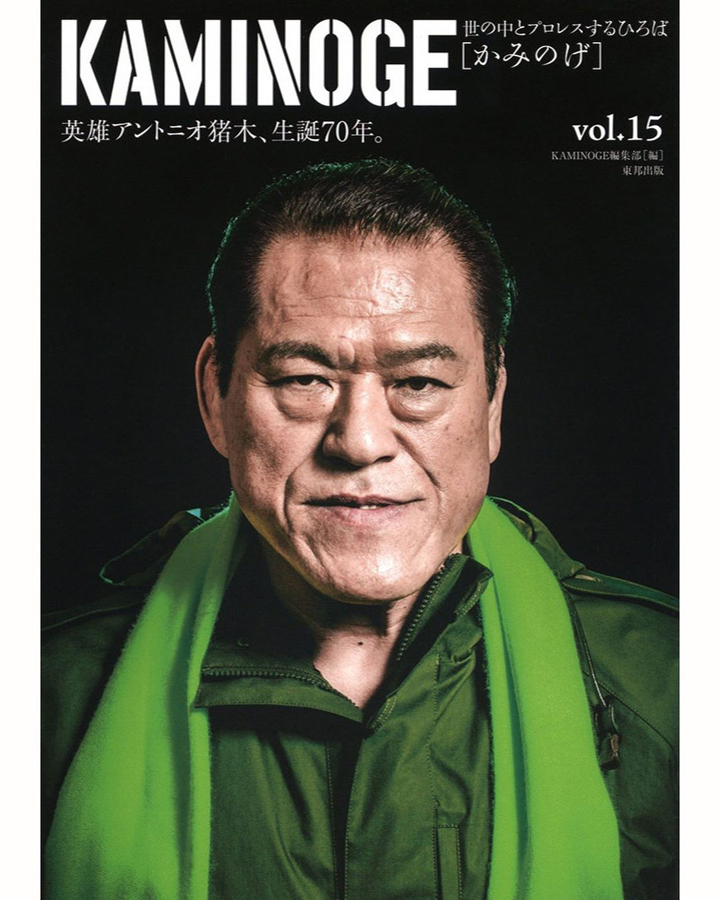
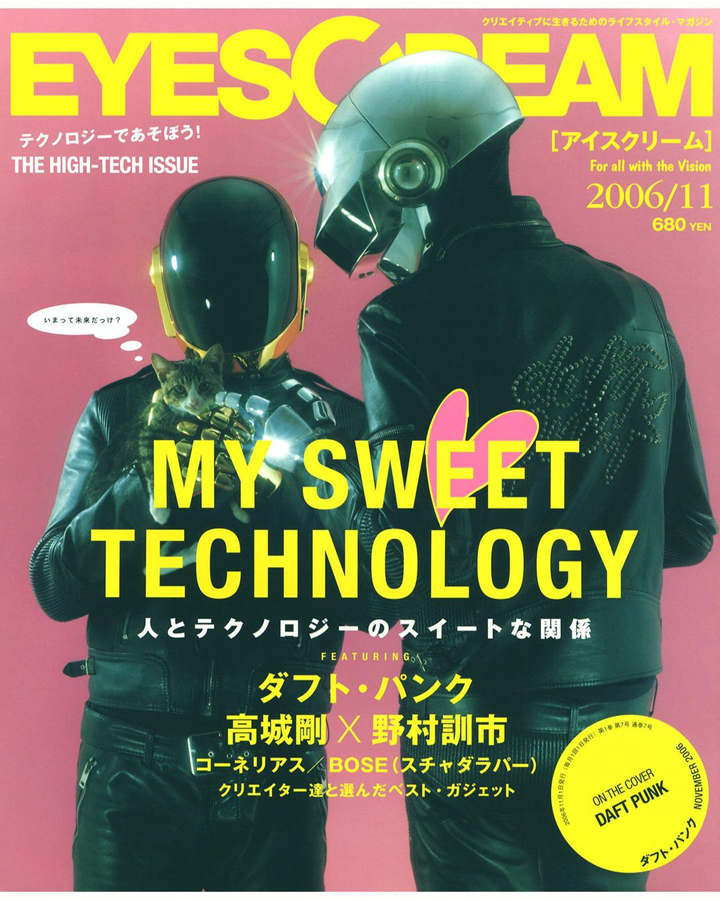
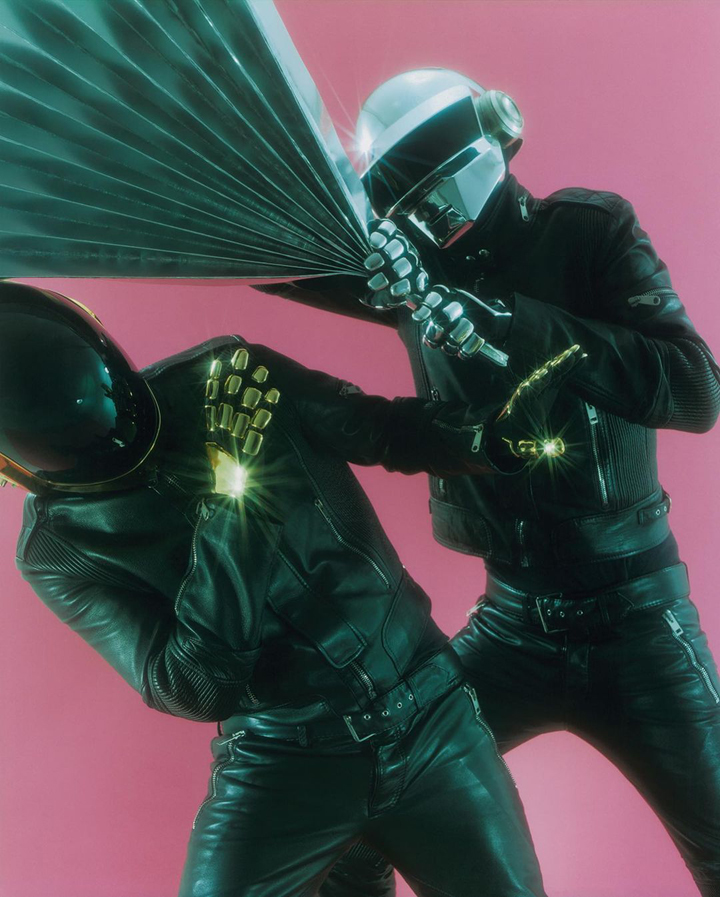
V: How was Daft Punk?
U: I saw their ass. They were changing clothes.
V: Have you ever been nervous or hesitant to click the shutter?
U: Basically, I don't get nervous. I hardly talk and I get super concentrated at shoots. I can talk about a happy shoot instead. That was when I shot Kyohei Shibata and Hiroshi Tachi for Abunai Deka (laughs). I was like, "I used to watch them on TV when I was a kid!" I was stoked.
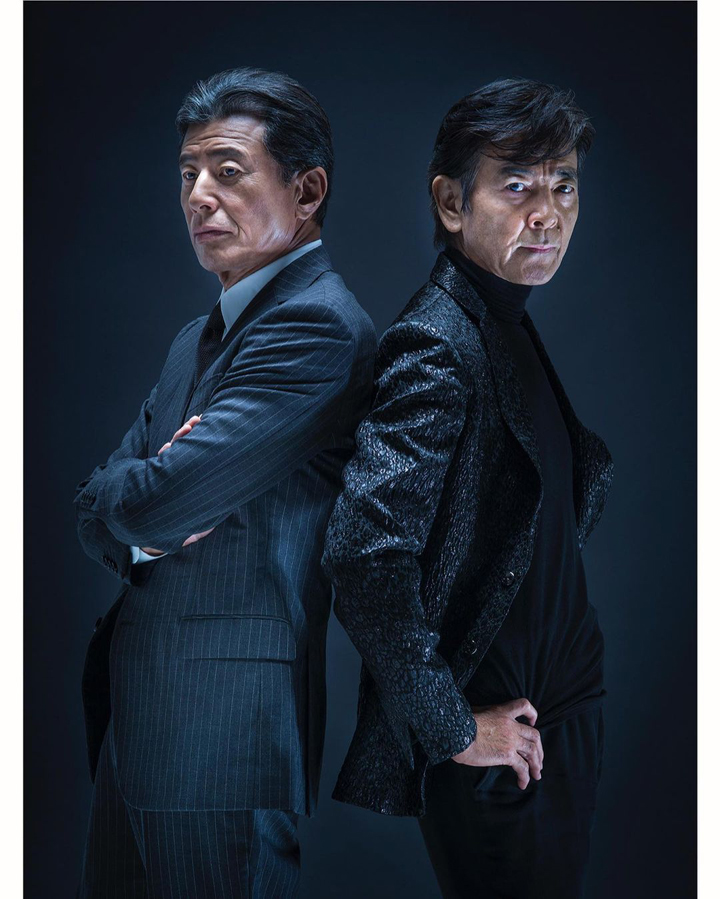
V: You shoot quite a lot of celebrities. Does it mean that commercial work alone isn't enough to satisfy you?
U: It may sound weird but... I was stoked to shoot them when I was young, but now it's just one of my jobs. That's what I wanted to do, and I think it's a good thing. On the other hand, if it's an interesting project, I don't care about the pay, I'll do it. But what I think is that with work, you have to do things that you're not interested in. But that's also interesting because of the irregularity of it. It's better to do commercial work as well as personal stuff. I think it's important to do something you don't like to do. I used to turn down all kinds of jobs, but now I'm willing to try anything.
V: Are there many photographers who work in both the commercial and contemporary art fields?
U: No, because both worlds do not respect each other very much. They're totally different worlds. So maybe not many people do both. But I don't think it's necessary to separate the two. It feels a bit old if you separate.
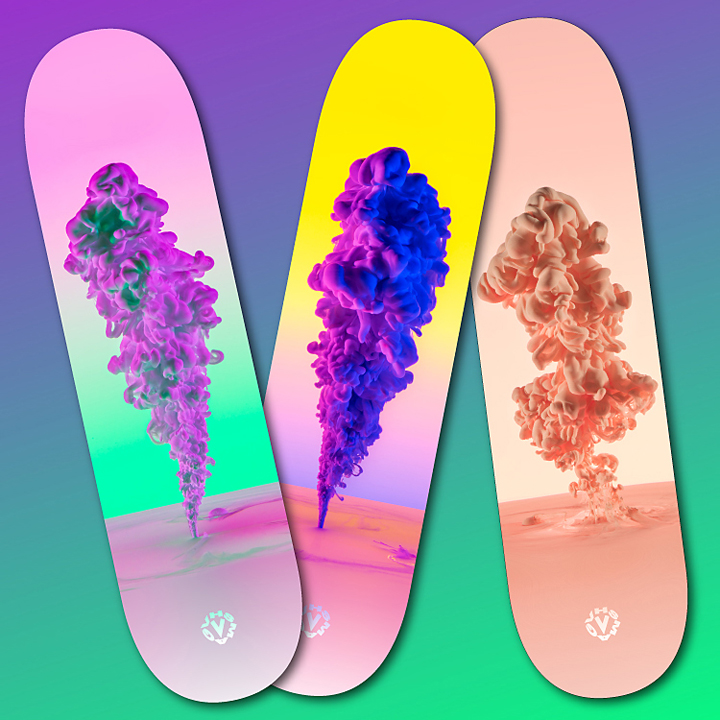
V: Tell us about your Incarnations series, which you have been working on since 2012. Some people overseas use words like "the darkness of modern Japanese society" or "the mushroom cloud of the atomic bomb" to describe your work. What's the real story?
U: I knew people would say that. But it's not just that. It's more of a character in a three-dimensional moment. I've been working on this series since 2012 and it's a series of photographs of three-dimensional objects instantaneously sculpted with liquid. It's the most photographic and non-photographic expression of all, and it captures the beauty of forms created by nature as characters, including ambivalent emotions. I create various shapes with simple techniques, combine them with complex lighting and turn them into colorful figures, characterize them as heroes or anti-heroes. Then I name them and they multiply like a virus.
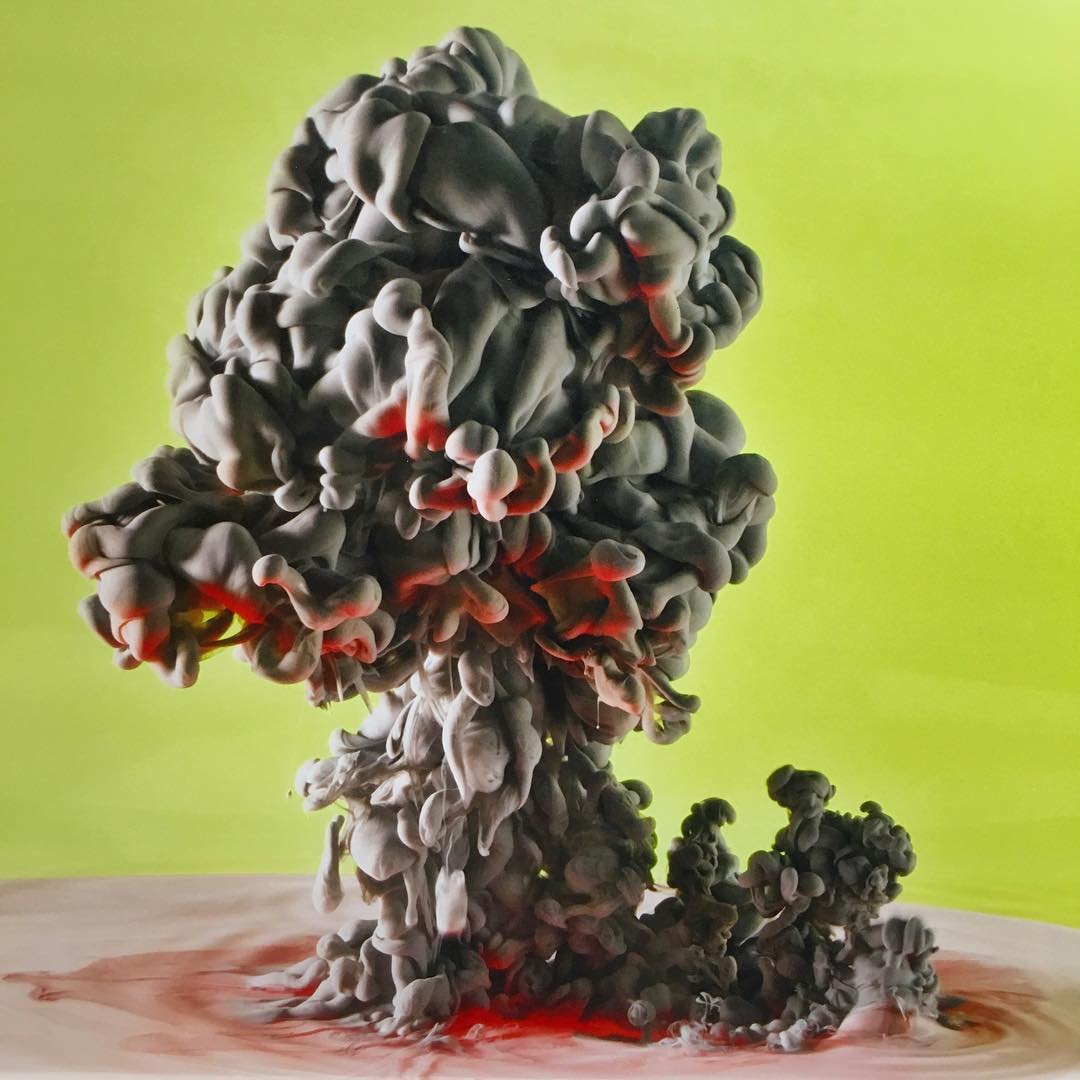
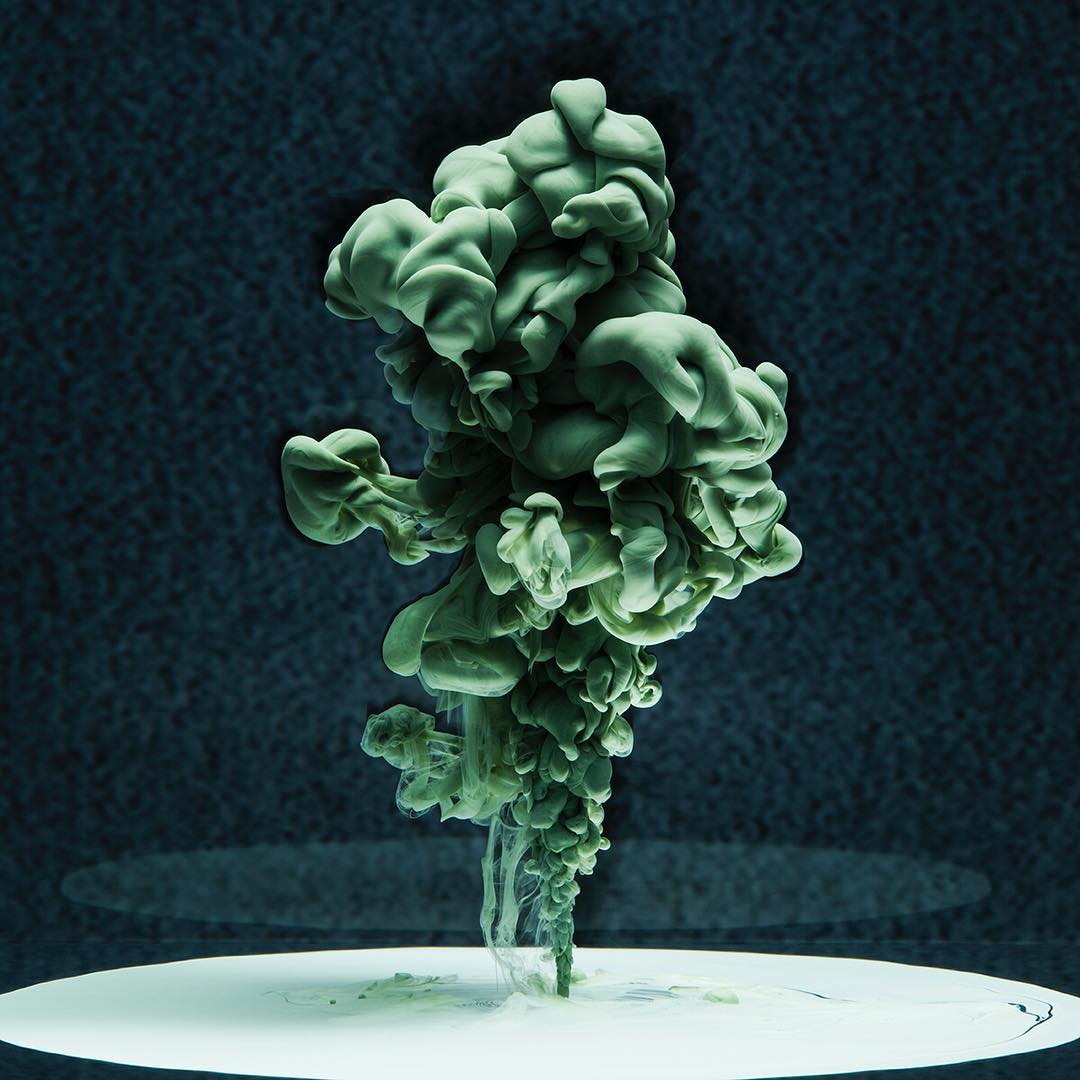
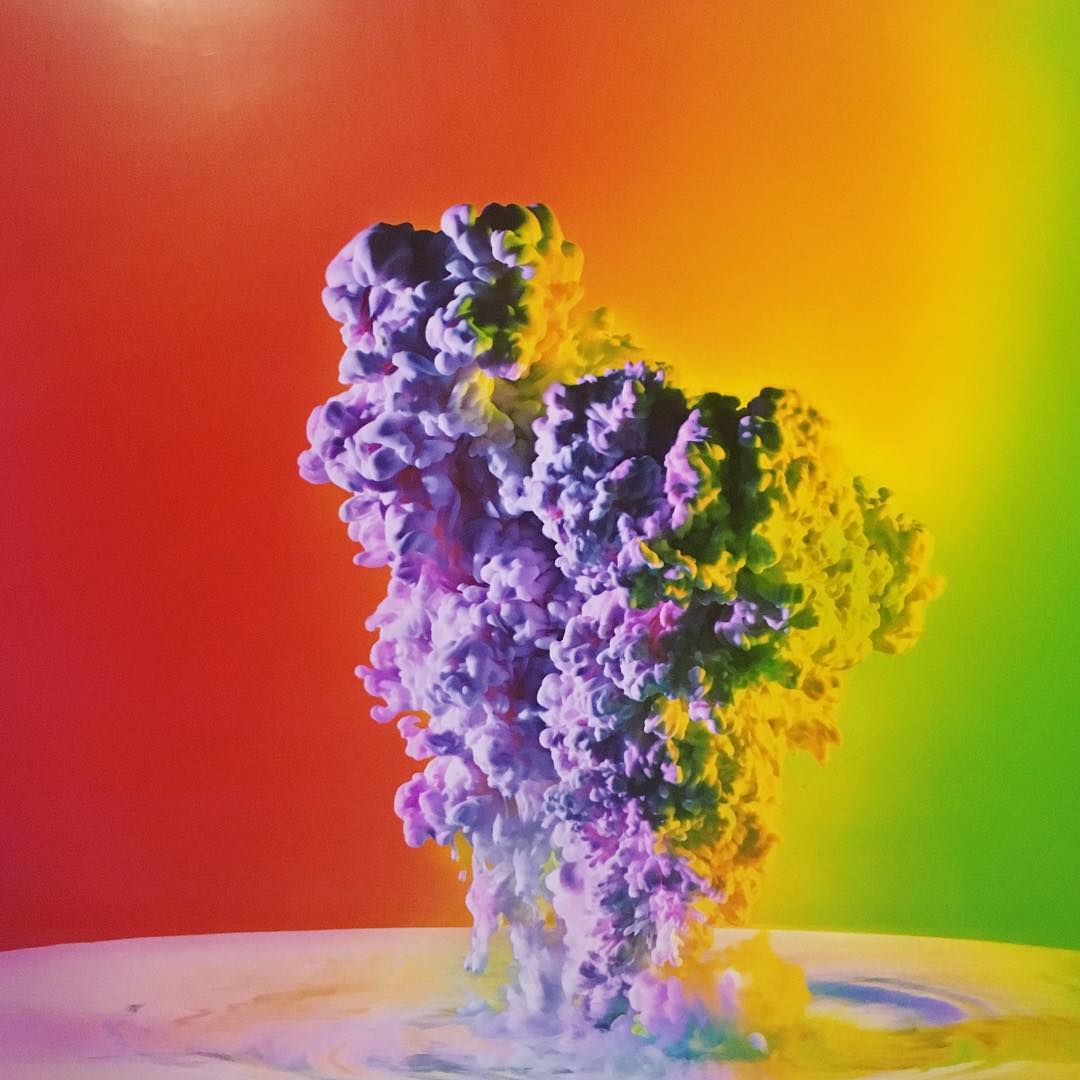
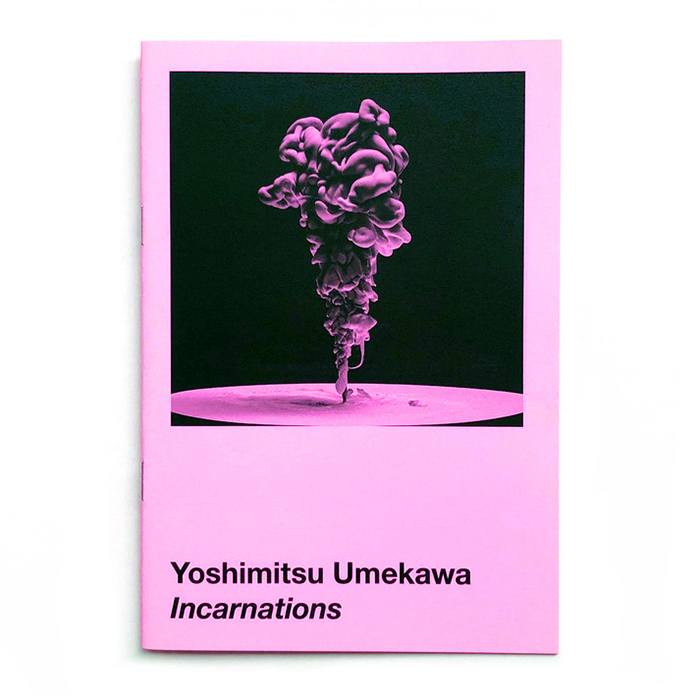
V: This series has been well received abroad. How did your name get out there?
U: HI-FRUCTOSE featured my photo and that's how it started. People started following me on Instagram and my followers grew. Also the official US Instagram account followed me and it spread around the world. So I didn't buy my followers. Everyone seems to be buying it (laughs).
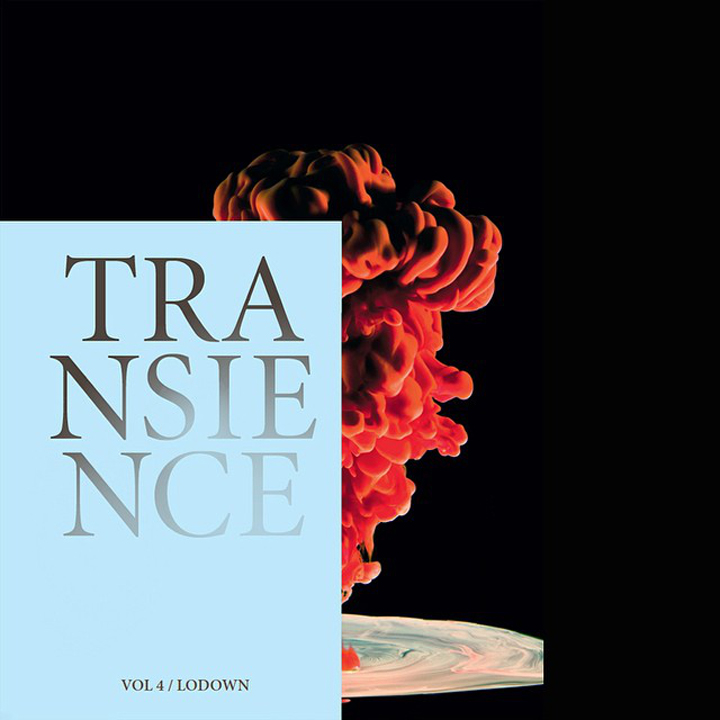
V: Your work has also made it on the cover of Lodown.
U: That was before HI-FRUCTOSE. I was introduced to Lodown by an acquaintance when I was looking for a medium to publish the work I was working on at the time. First, I had an 8-page piece published in the 2012 square edition of Lodown Issue 81. After that, a new series (Incarnations) was created and I sent it to them, and they liked it, and my work was featured on the cover of a special issue, the Transience Art Issue Vol. 4.
V: So what are you up to recently?
U: I'm working on a photo book that's scheduled to be released next year. It will include a new body of work to the existing Incarnations series. I'm meeting with a publisher and a book designer. I'm also planning a solo exhibition in Japan in the spring.
V: Lastly, is there anything you want to accomplish as an artist?
U: Past and present, I'd like to continue to present my work while keeping an attitude that doesn't pander to the world and strikes at the essence. I don't want to take it too seriously but that's about it..
Yoshimitsu Umekawa
@yoshimitsu_umekawa
Born 1976 in Tokyo. Since 1999, he has worked in various media such as culture and music magazines, CD jackets, fashion, advertising, exhibitions, etc. Since 2012, he has been working on the series "Incarnations" and made it on the cover of Berlin's art culture magazine Lodown. He has released the photo books LEAVE ME ALONE and Drip Bomb, and the zine Incarnations.








